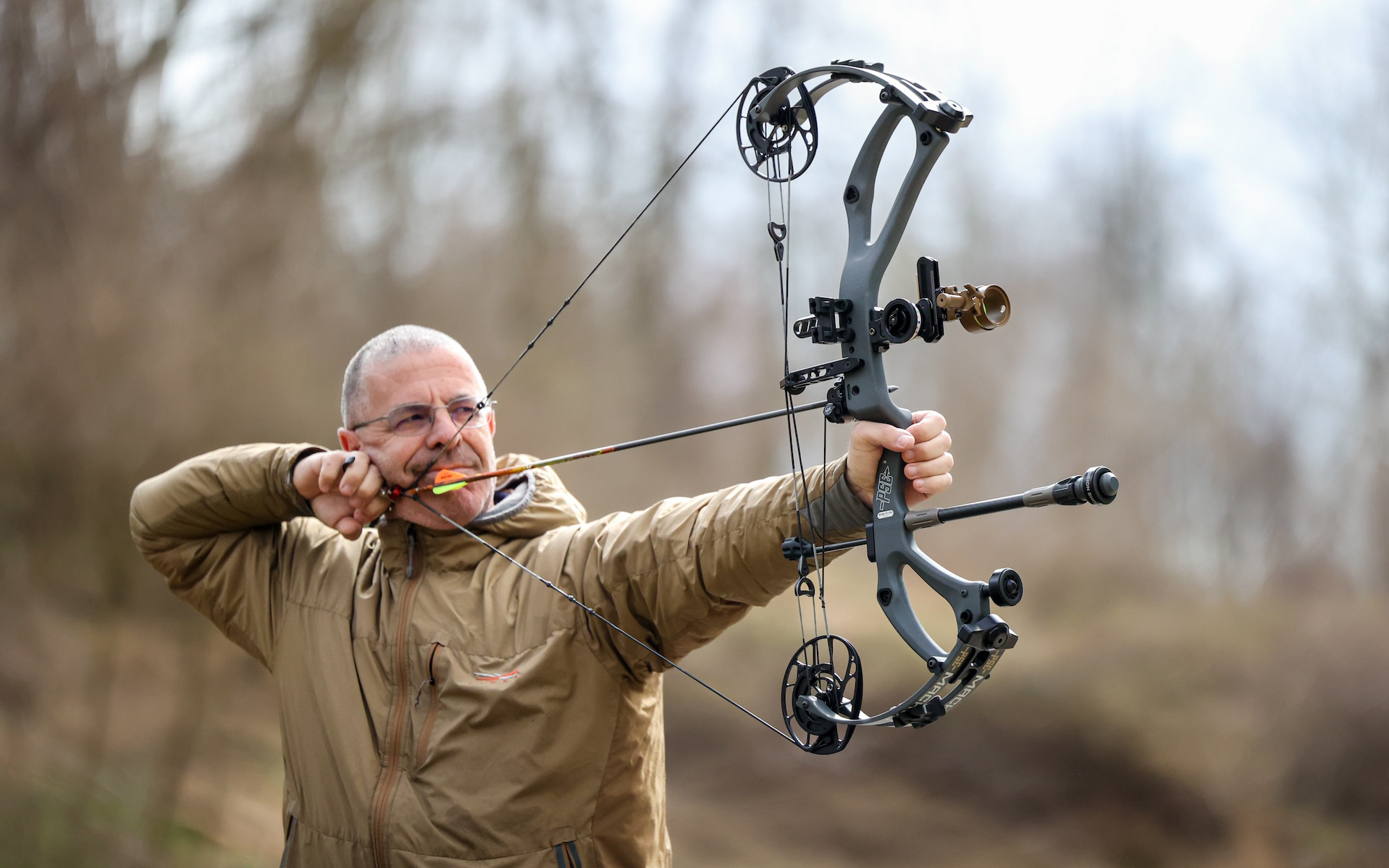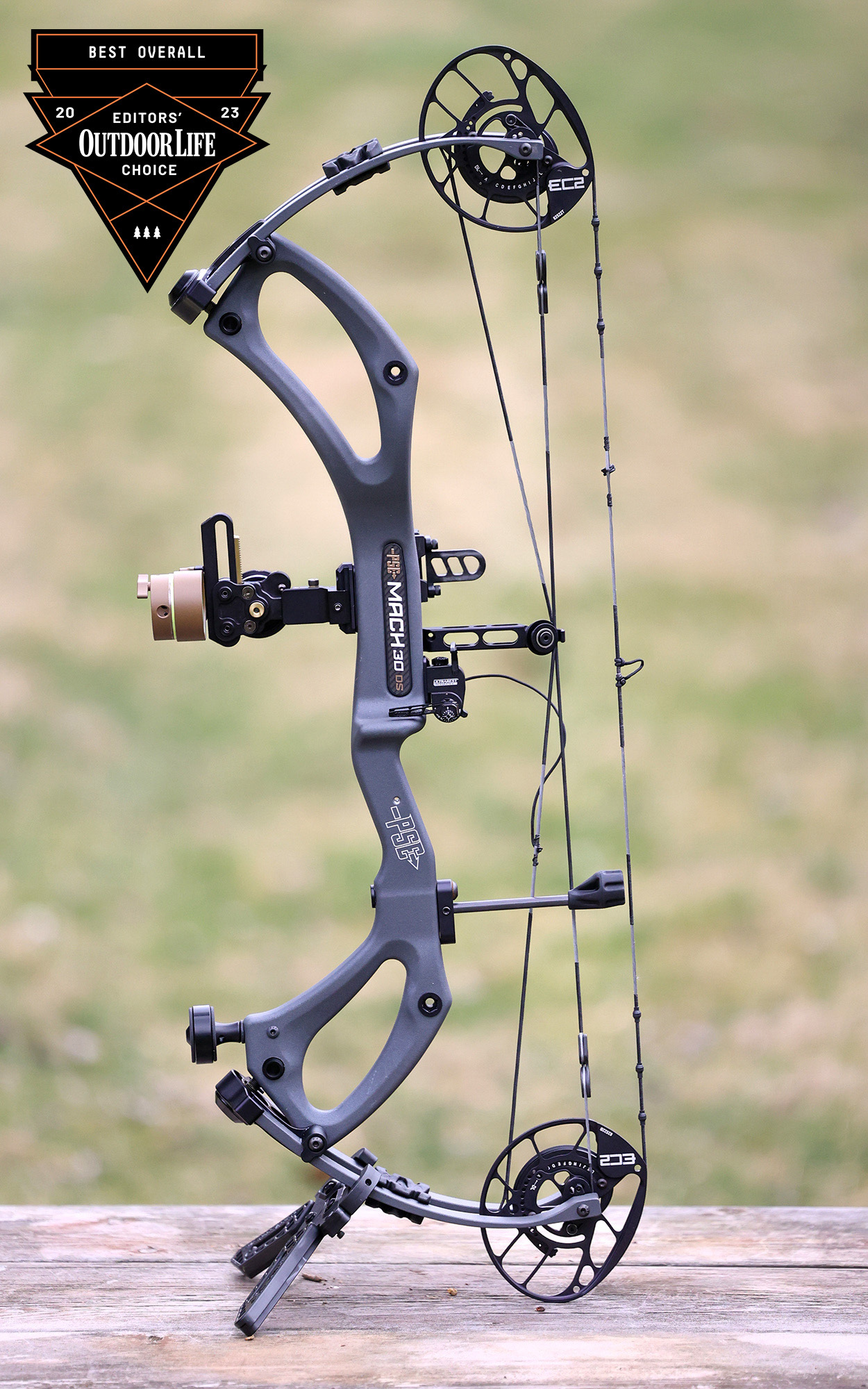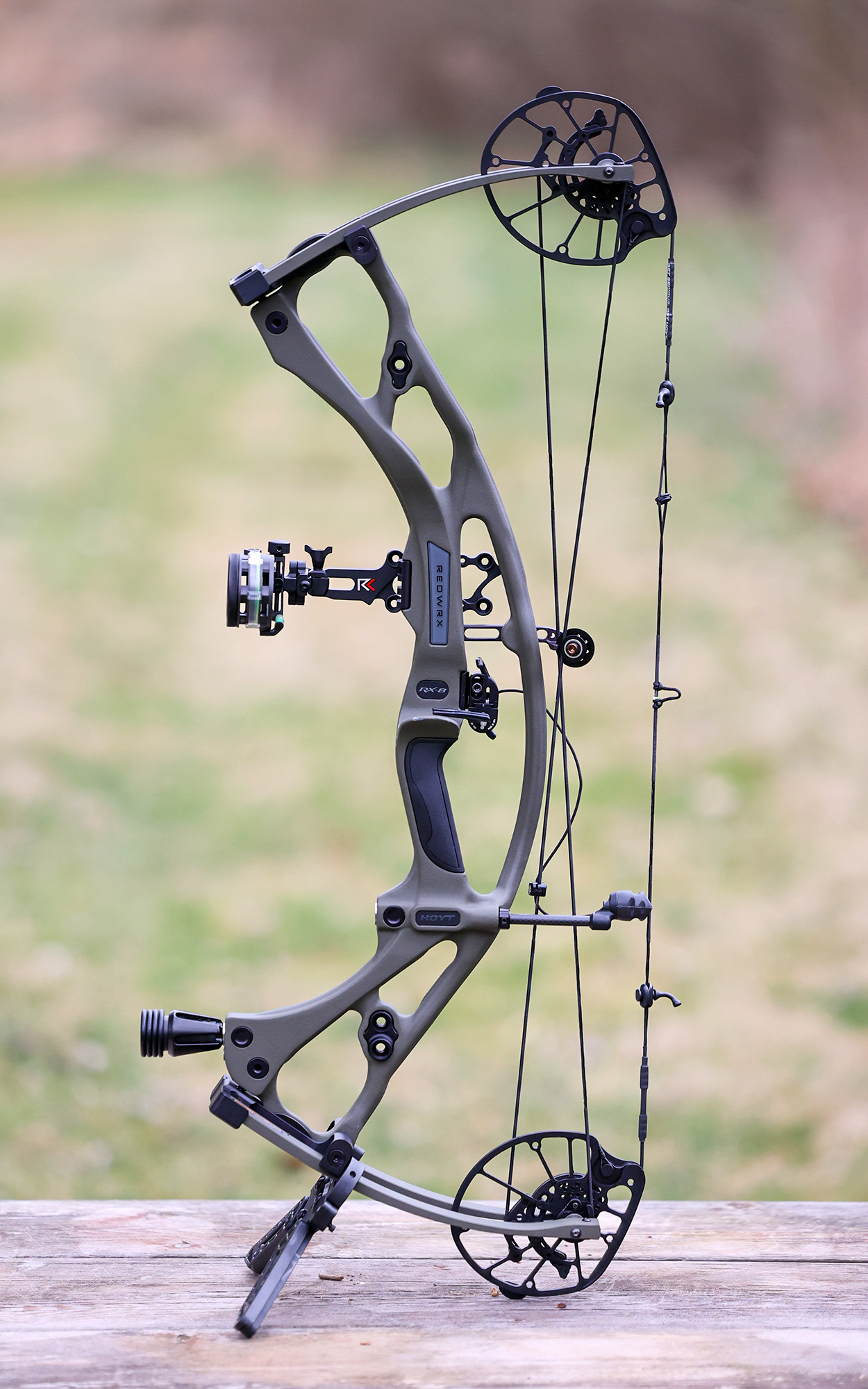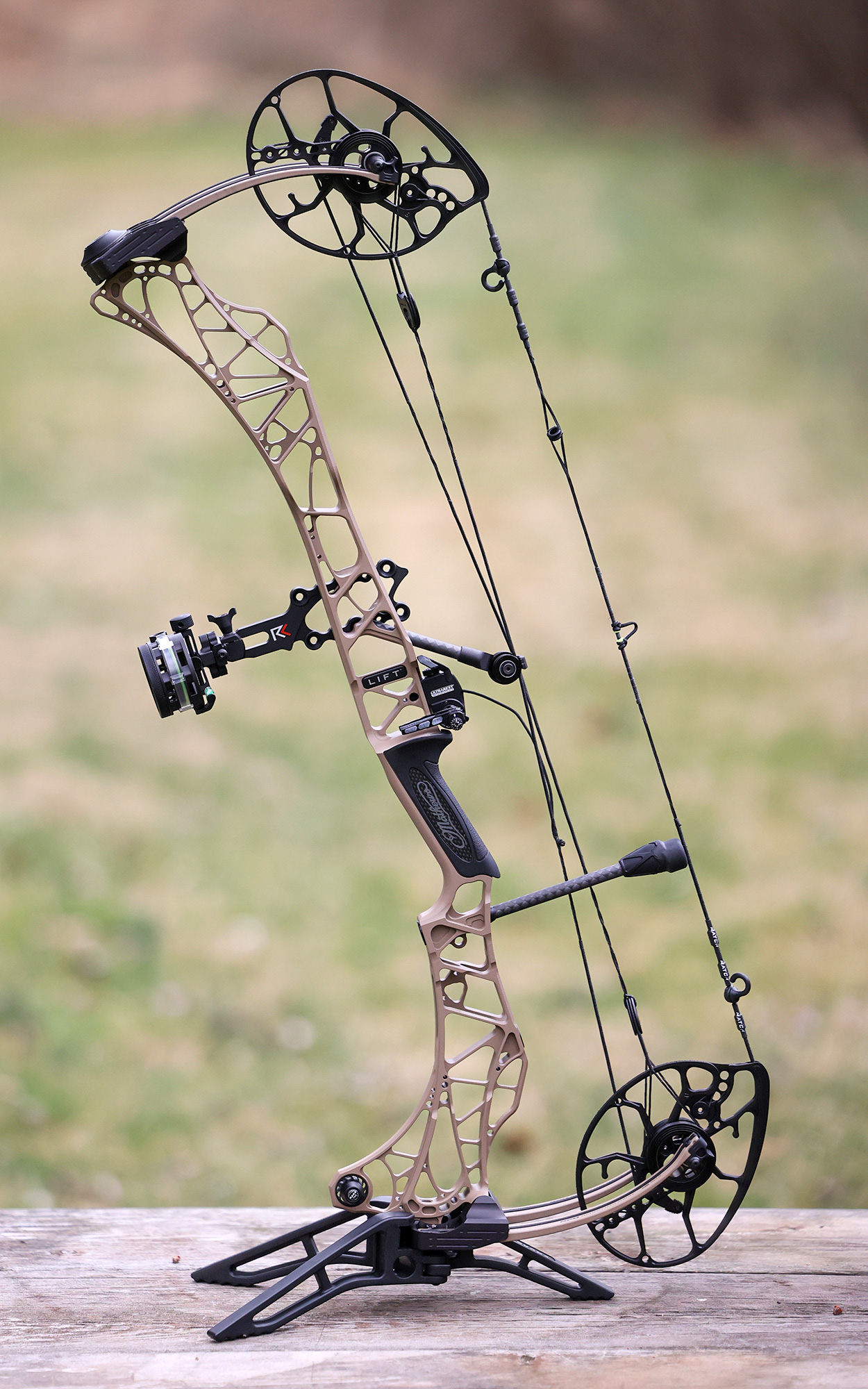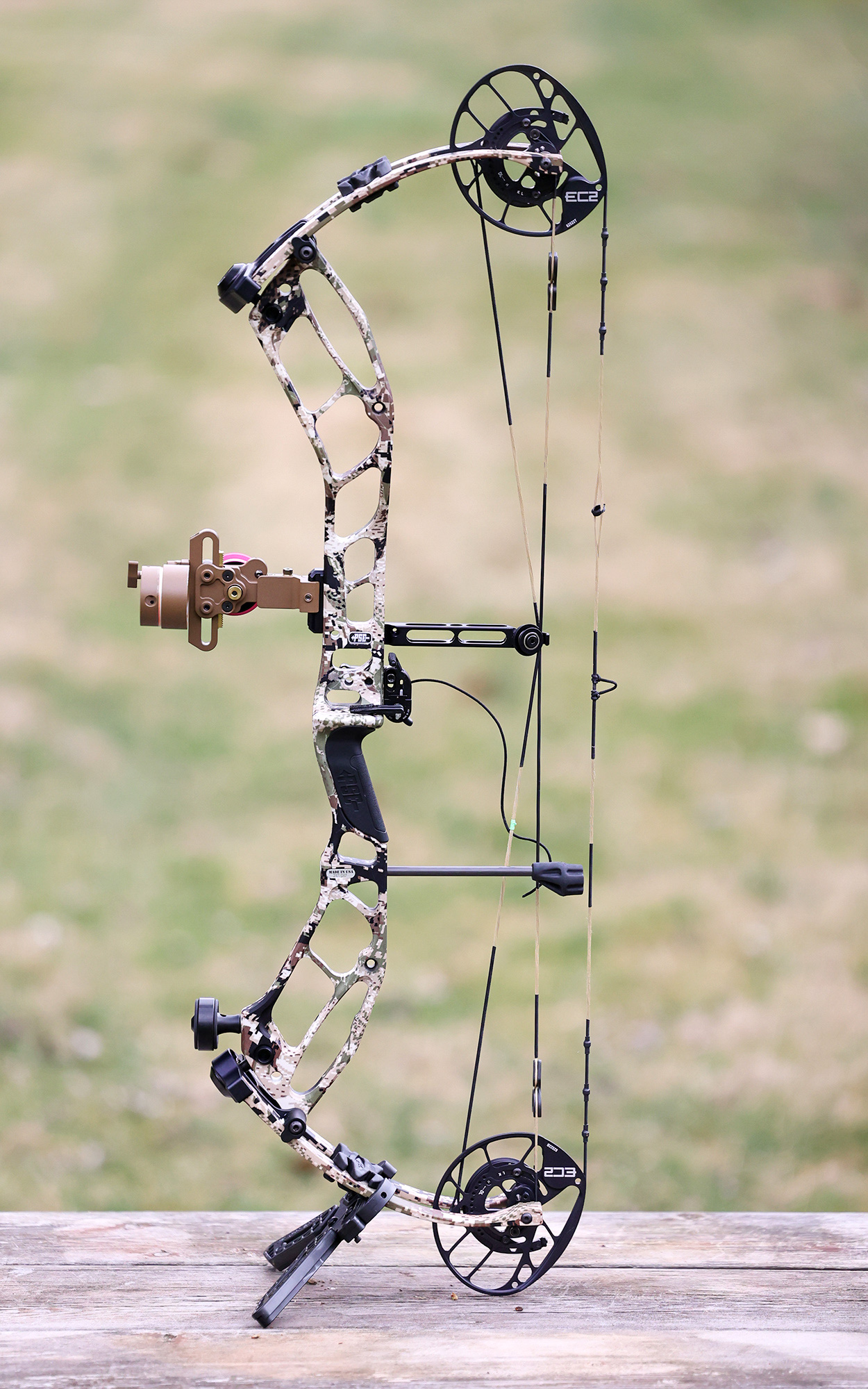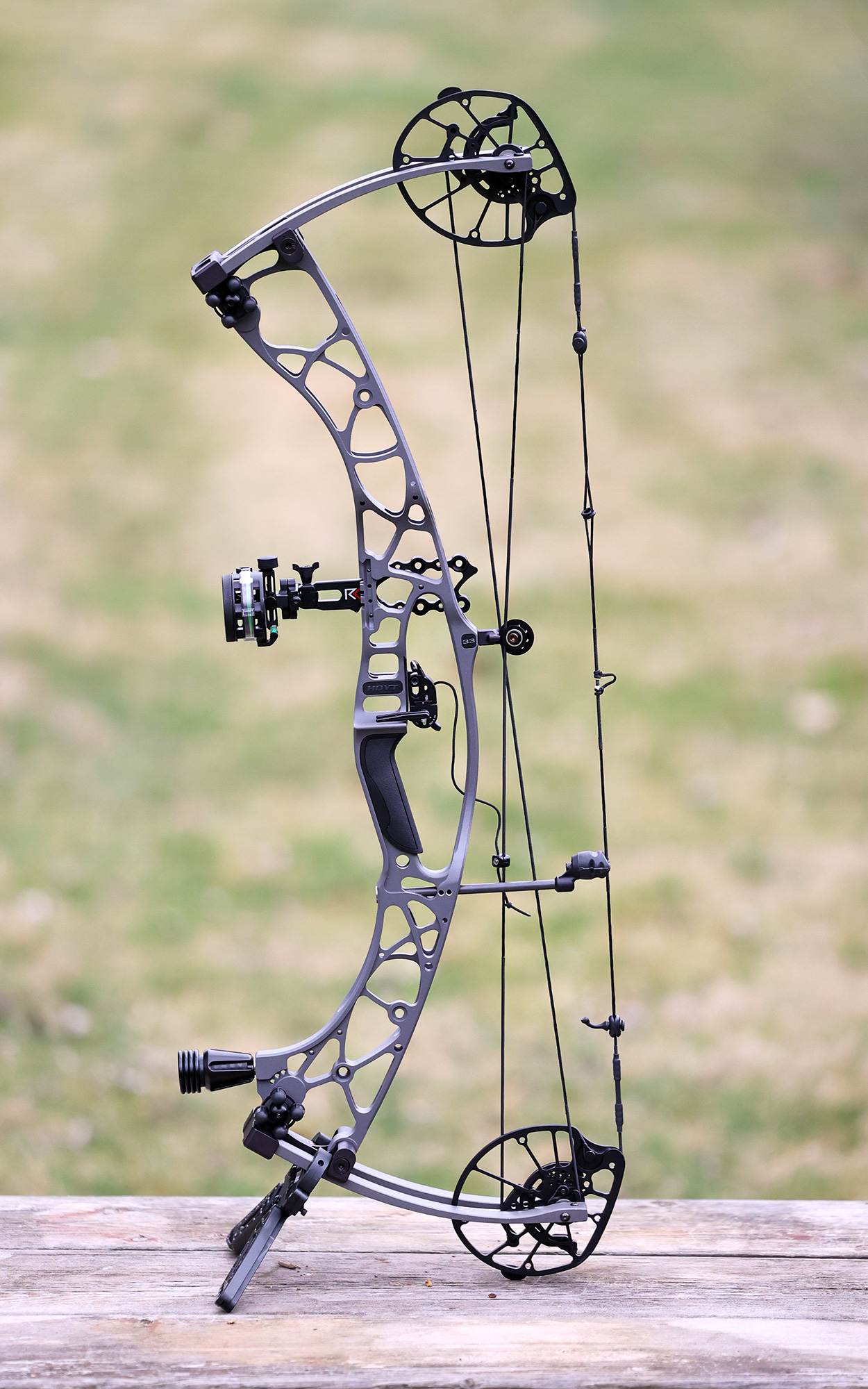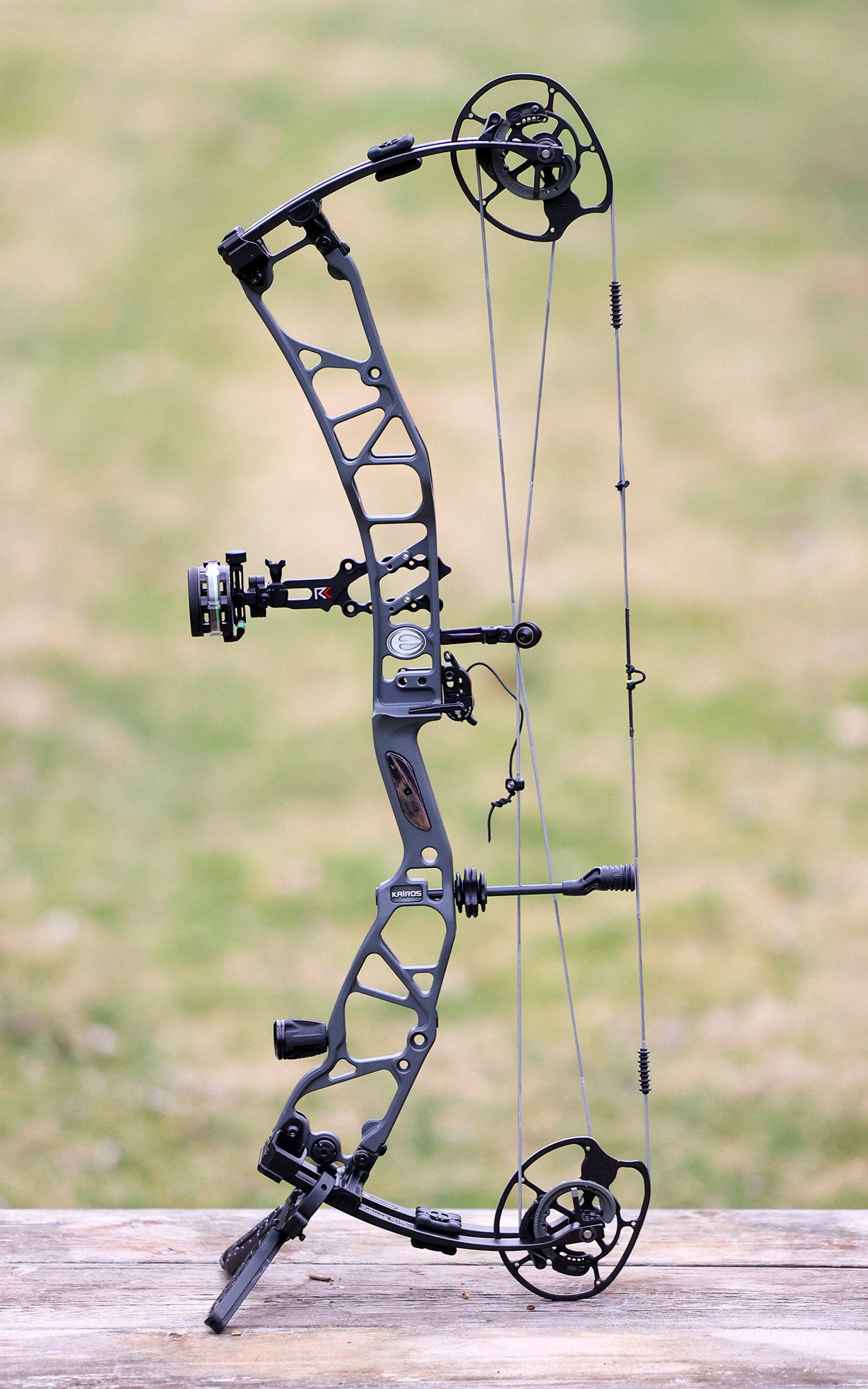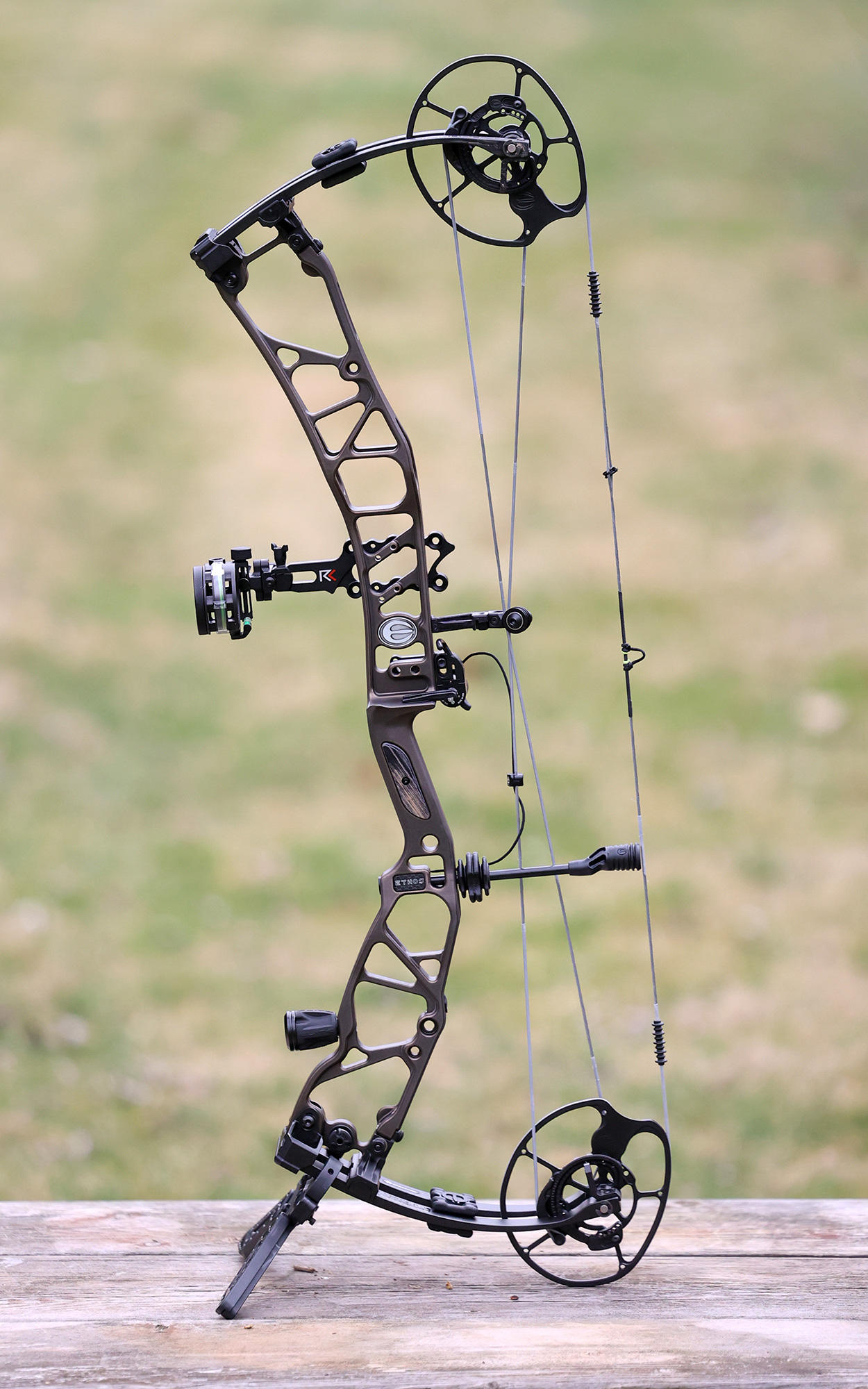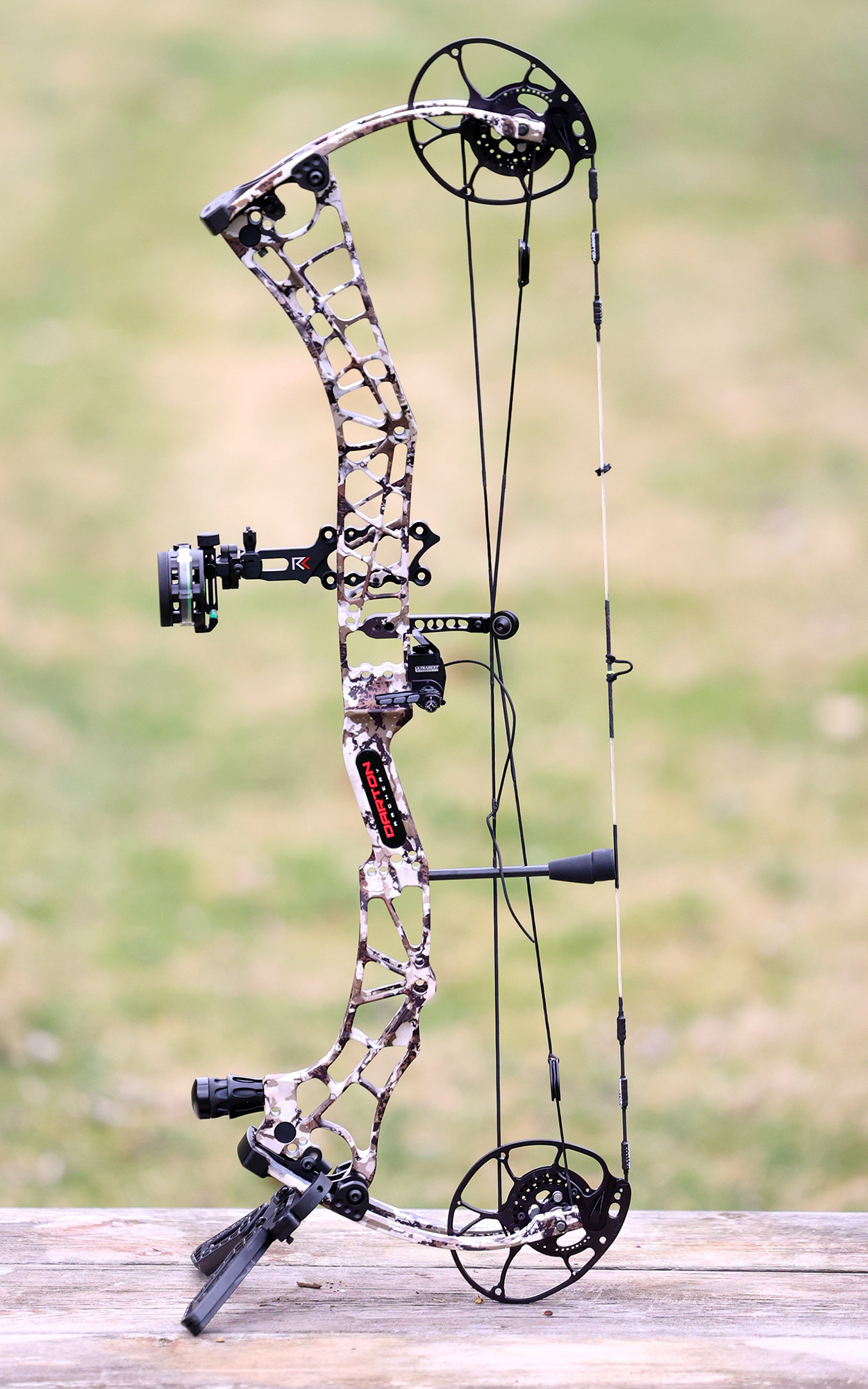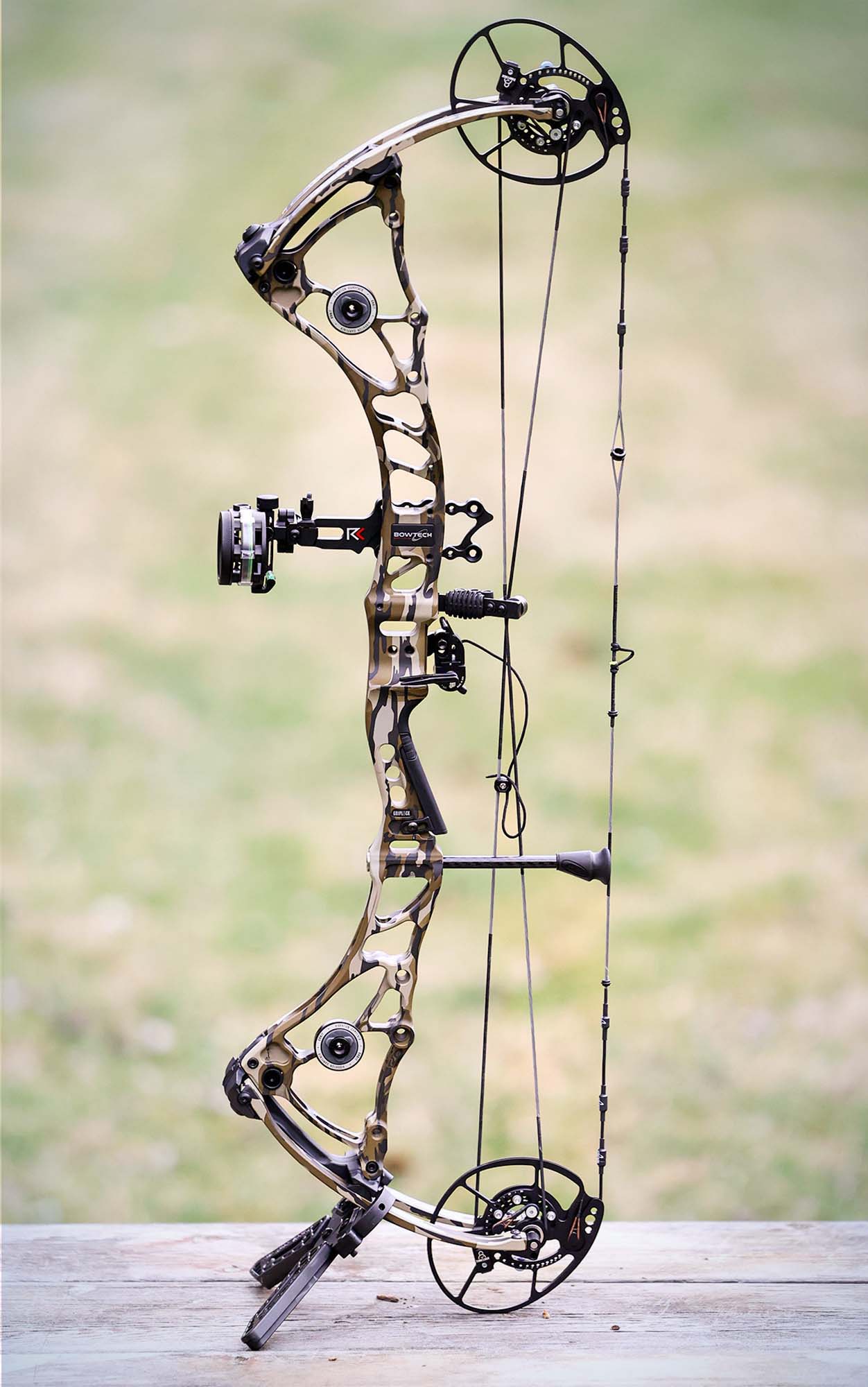We may earn revenue from the products available on this page and participate in affiliate programs. Learn More ›
Historically, a bowhunter could have either a fast bow or a smooth drawing bow. They could have a light, unforgiving bow or a heavy, accurate one. Compromises needed to be made. But one of the revelations from our 2024 bow test is that this is no longer the case. If you’re shopping for a new compound, you really can have it all.
However, if you want to truly enjoy the best compound bows of the year, then you must first let go of everything you thought you knew about bow design. You must also forsake those old brand allegiances. If you think Mathews bows are slow, PSE bows are hard to draw, and Hoyts have handshock, well you’re dead wrong. If you swore off carbon bows in 2012 after you couldn’t fix a stubborn left tear, you need to reevaluate.
In our test we put nine flagships through a head-to-head shootout and discovered a marvel of a bow that weighs 3.5 pounds, shoots fast, draws smooth, holds wonderfully at full draw, has minimal vibration, aims like a rock, and can shoot under 2-inch groups at 50 yards. So forget history. Welcome to the future.
What We Cover (Click on the section to jump to it)
- How We Tested the Best Compound Bows
- Choosing the Best Overall Bow
- Editor’s Choice: PSE Mach 30 DS
- Hoyt RX-8 HBX Xact
- Mathews Lift
- PSE Evolve 33 DS
- Hoyt Alpha X 33
- Elite Kairos
- Elite Ethos
- Darton Sequel 31
- Bowtech Core SR
How We Tested the Best Compound Bows
Bow Setup and Tuning
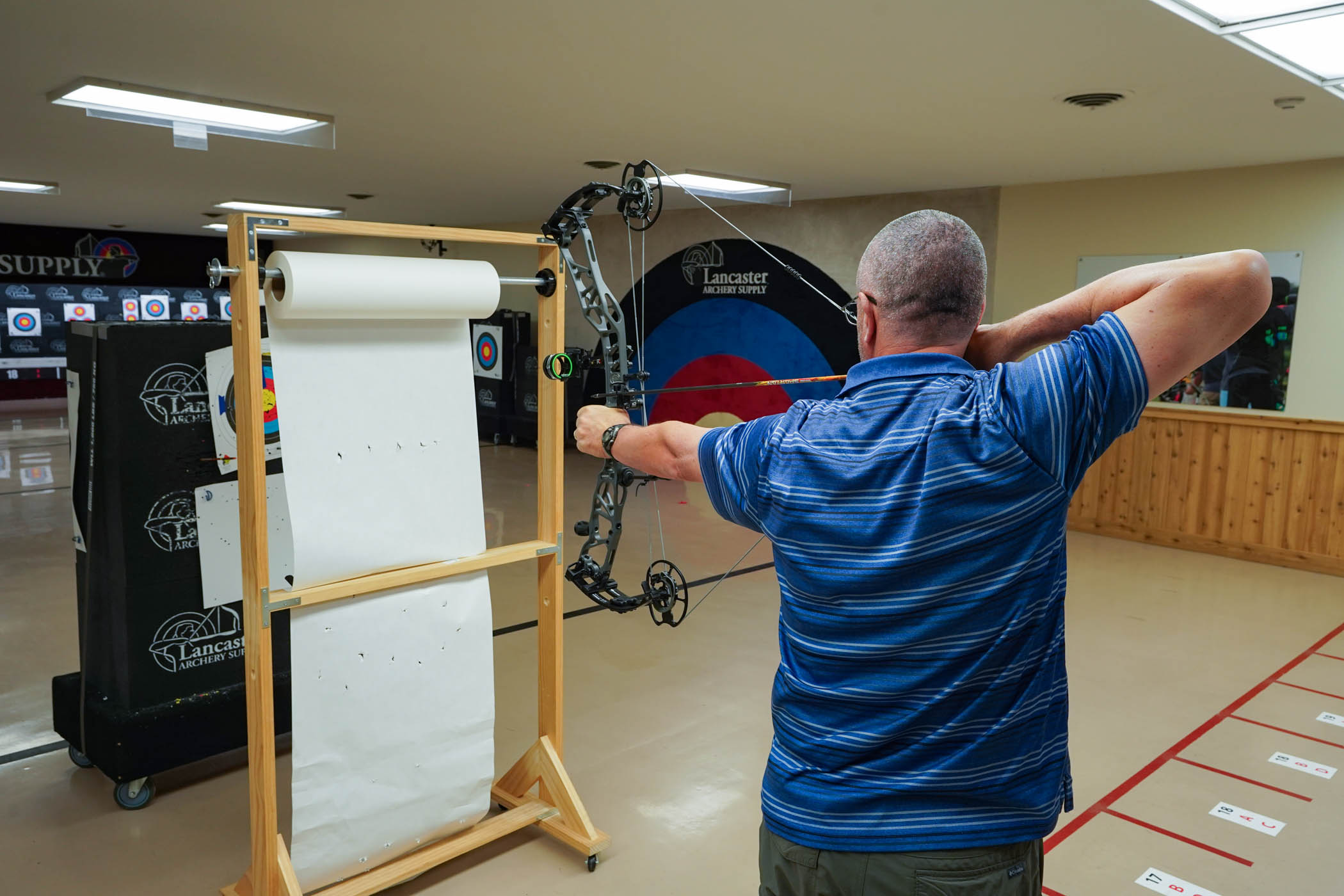
Scott Einsmann
All bows were set to 60 pounds (+/- .5 pound). We set bows at 29 inches of draw length and measured the draw length using the ATA standard of the string apex to the pivot point, plus 1.75 inches. We measured exact draw weight and draw length to provide context for the bow’s speed.
We timed the cams, set the centershot to the standard 13/16 inch, and set the nocking point height level. Then we paper tuned to a bullet hole to make sure we were doing the speed and accuracy testing with a tuned bow.
The 5-Foot Test
When you try out a bow at an archery shop you’ll likely test it close to the target (from about 5 feet away). The point is to judge the bow on how it feels when you draw and shoot. Testers replicated that experience by shooting all the bows at close range and then rating them on a scale of one to five (five is the best) on the following attributes.
- Build Quality: Machining, paint/dip/anodizing, components, strings
- Features: Tuning adjustments, rest/sight mounting, draw length adjustment
- Back Wall: How the wall and valley feel
- Draw Cycle: Is it smooth or harsh
- Grip: Is it comfortable and does it promote consistent hand placement
- Post Shot: Vibration, noise, bow’s reaction
You’ll find the 5-foot test scores in the test results section for each bow.
Accuracy Testing
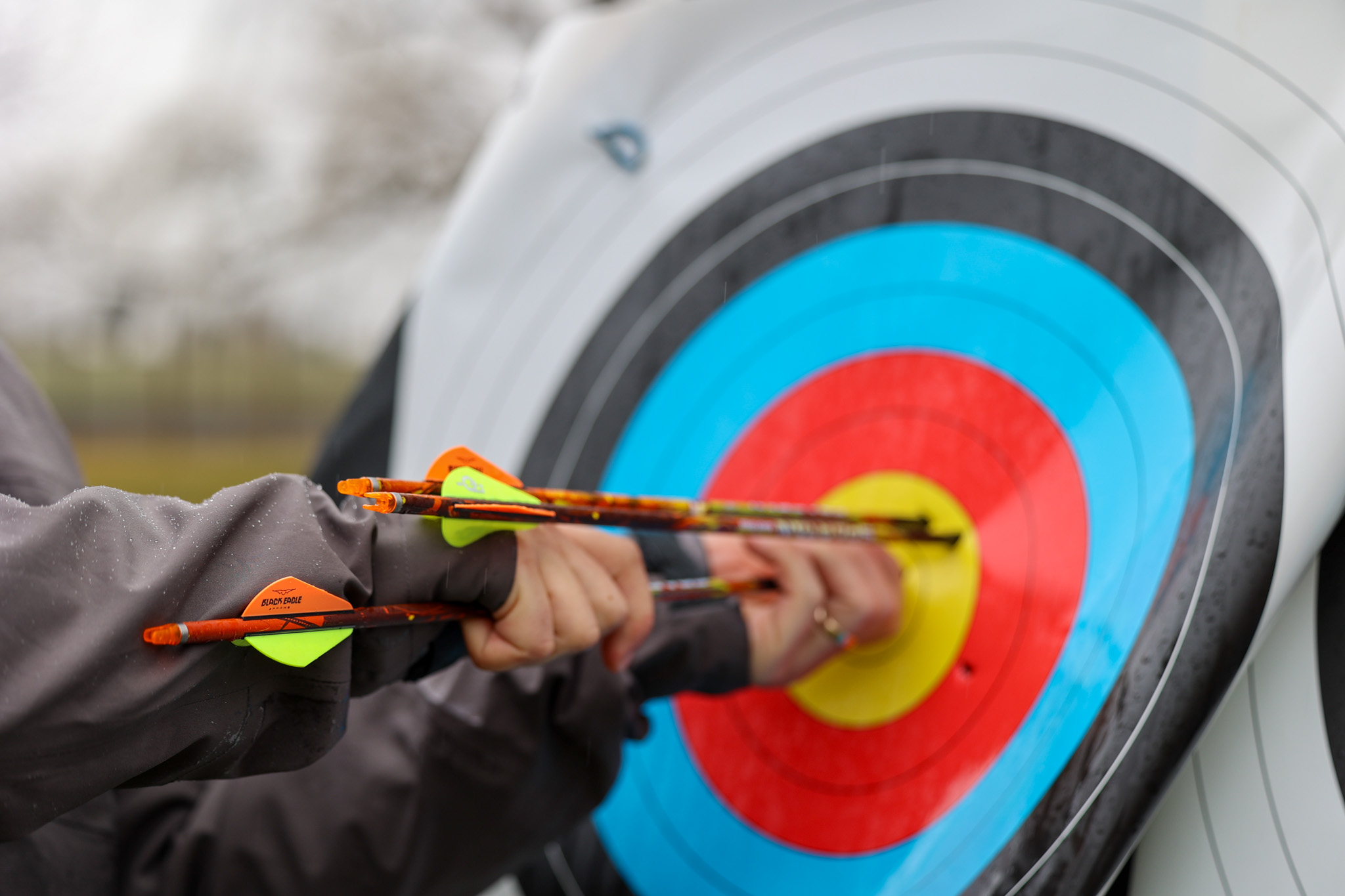
Natalie Krebs
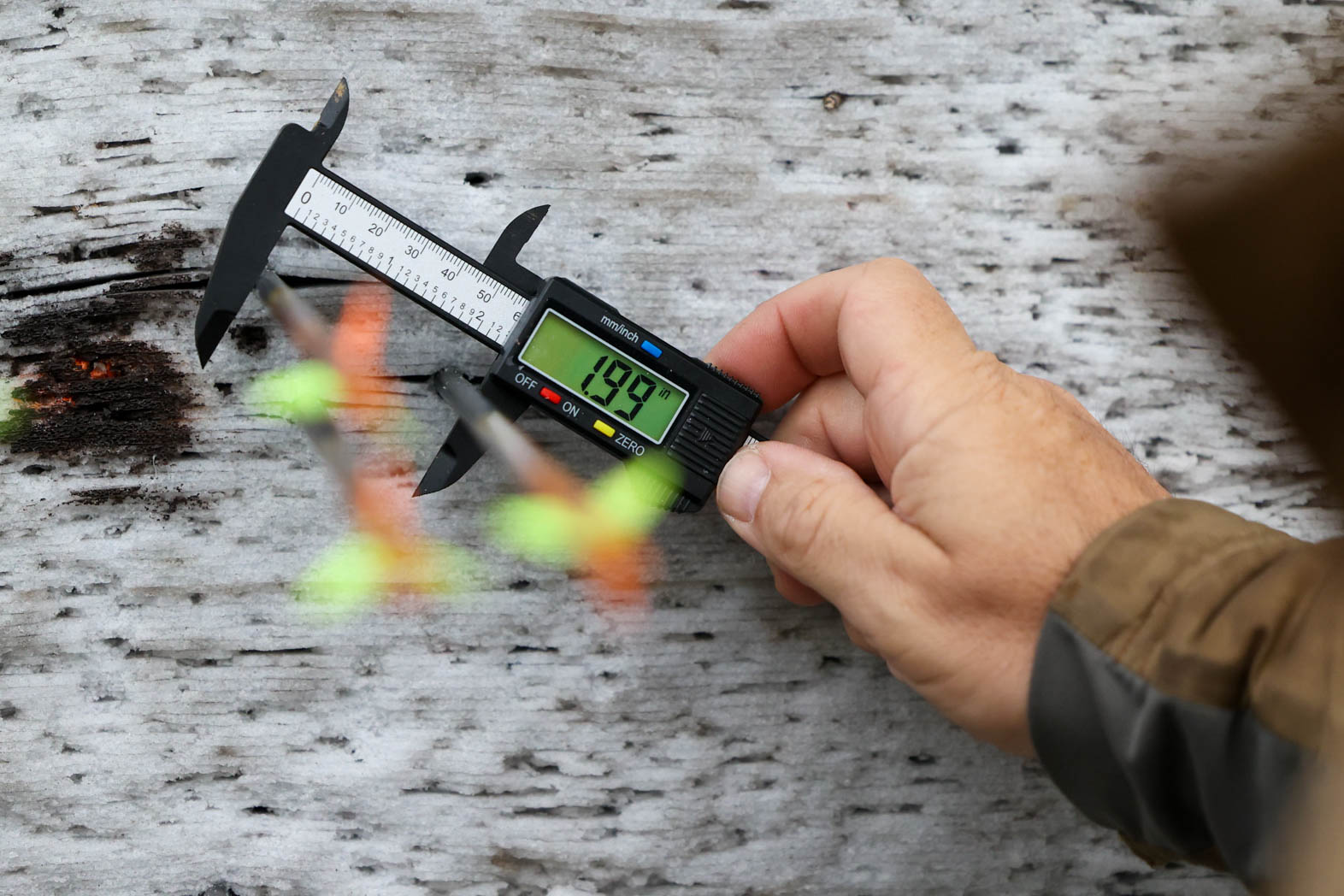
Natalie Krebs
Three testers shot a total of 252 arrows over two days to gather accuracy data. On day one, testers shot two, three-arrow groups at 50 yards from each bow. The bows were shot with only a sight and arrow rest attached.
On day two, the field was cut to the top five bows and each tester shot two, three-arrow groups at 50 yards once again. Testers had a full range of front and side bars to experiment with on day two and were allowed to set up each bow to their personal taste.
The accuracy test is telling because a bow must shoot well for three different archers to earn a small group average.
Speed
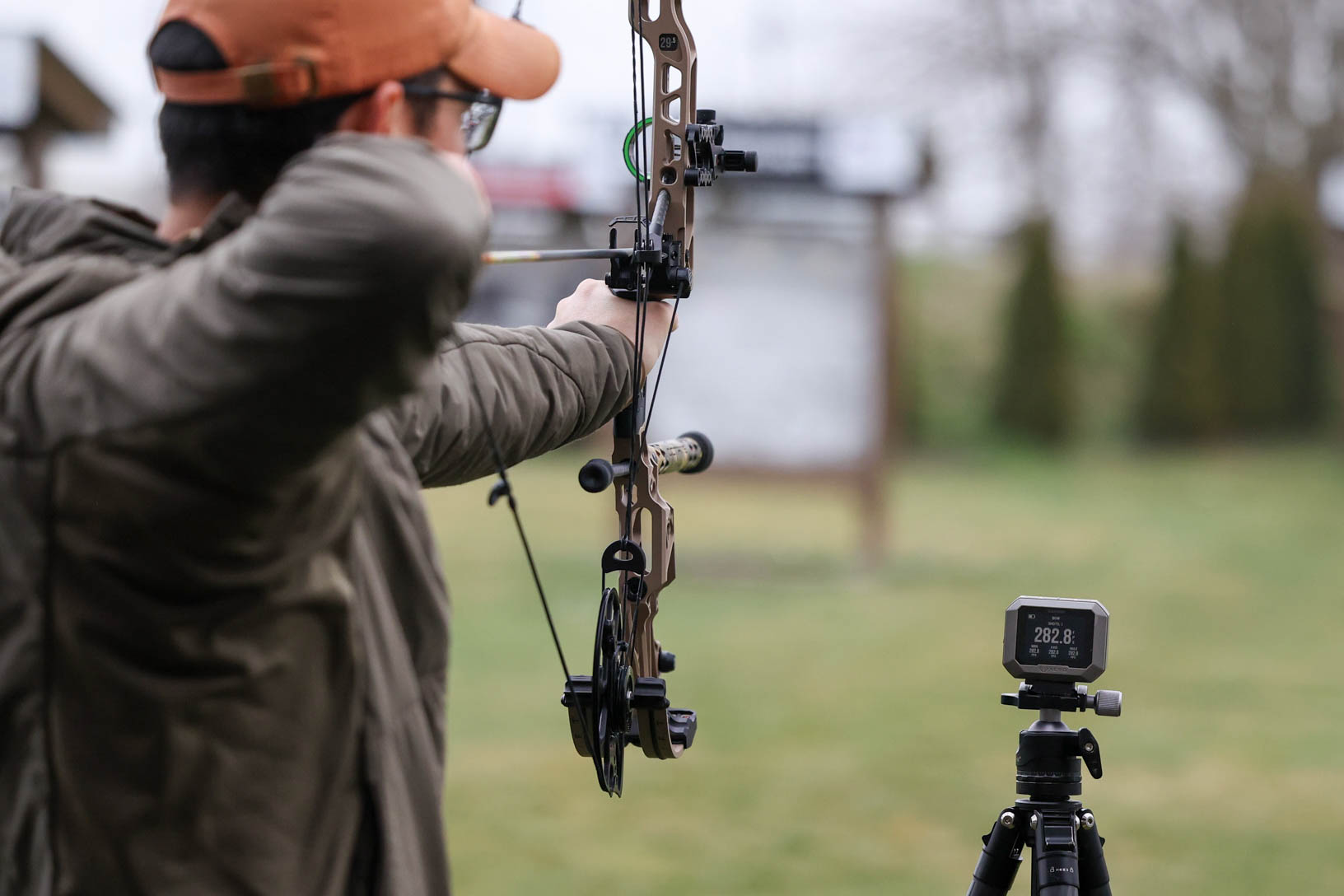
Natalie Krebs
We shot Black Eagle Spartan arrows in a 350 spine cut to 28.75 inches with a 100-grain field point. The arrows weighed 406 grains overall. Bows were shot at 60 pounds and a 29-inch draw length. Each bow’s exact draw weight is listed along with its speed in the test results section.
We used a Garmin Xero C1 chronograph to measure three shots from each bow. We then averaged those three recorded speeds for the final spec. Because everything from a bow’s tune to the weight of the peep can affect a bow’s speed, the speeds listed are meant to provide reference points, not the final word on a bow’s speed. It’s also important to note that all of today’s flagship bows are pretty fast, but what’s impressive to us is when bows are easy to draw and still shoot fast.
Choosing the Best Overall Bow
| Top 5 Bows | Speed (3 Shot Average) | Average 5-Foot Score | Day 1 Group Average | Day 2 Group Average | Cumulative Average |
| PSE Mach 30 DS | 281 fps | 25 | 2.58 inches | 1.5 inches | 2.04 inches |
| Mathews Lift | 283 fps | 22 | 2.83 inches | 2.27 inches | 2.55 inches |
| PSE Evolve 33 DS | 274 fps | 24 | 2.5 inches | 2.68 inches | 2.59 inches |
| Hoyt RX-8 HBX Xact | 274 fps | 26 | 3.7 inches | 2.76 inches | 3.23 inches |
| Hoyt Alpha X 33 | 276 fps | 24 | 3.45 inches | 3.01 inches | 3.23 inches |
| Rest of the Field | Speed (3 Shot Average) | Average 5-Foot Score | Day 1 Group Average |
| Elite Kairos | 277 fps | 21 | 3.33 inches |
| Elite Ethos | 278 fps | 21 | 3.41 inches |
| Darton Sequel 31 | 276 fps | 23 | 3.58 inches |
| Bowtech Core SR | 277 fps | 22 | 4.7 inches |
I hate to sound like a broken record every year, but here I go again: All the flagship bows are excellent. Choosing the best among them isn’t easy and it usually requires us to weigh accuracy, the 5-foot test results, and innovation to make the final decision.
But for the first time in my years running the Outdoor Life bow test, we had a runaway winner. One bow shot so much better than the rest of the field that we continued testing it just to make sure we weren’t seeing an anomaly. All that further testing did was solidify the PSE Mach 30 DS as the best compound bow of 2024.
Gear We Used for Testing
Chronograph: Garmin Xero C1
The Garmin Xero C1 uses doppler radar to track a projectile and measure its speed. We chose it because it’s the best chronograph available and it provides consistent readings no matter the lighting conditions.
Bow Sight: Redline RL-3
The RL-3 is a three-pin sight with toolless micro adjust, which made it easy to sight in the nine bows in our test.
Arrows: Black Eagle Spartan
The Black Eagle Spartan is a consistent, small diameter shaft that was the ideal choice for getting the best accuracy out of the bows. It gave us an arrow weight of 406 grains.
Arrow Rest: QAD Ultrarest
The QAD Ultrarest won best overall in our best arrow rest review. So it was an easy pick to be our arrow rest of choice for the bow test. It offered easy setup, reliability, and accuracy.
Stabilizers
Front and rear stabilizers help refine your pin float and we used a variety of options to on the second day of accuracy testing. They included the Axcel Antler Ridge, Redline RL-1, and a franken Shrewd/Mathews stabilizer made by one of our testers, P.J. Reilly.
Other Tools Used
The Test Team
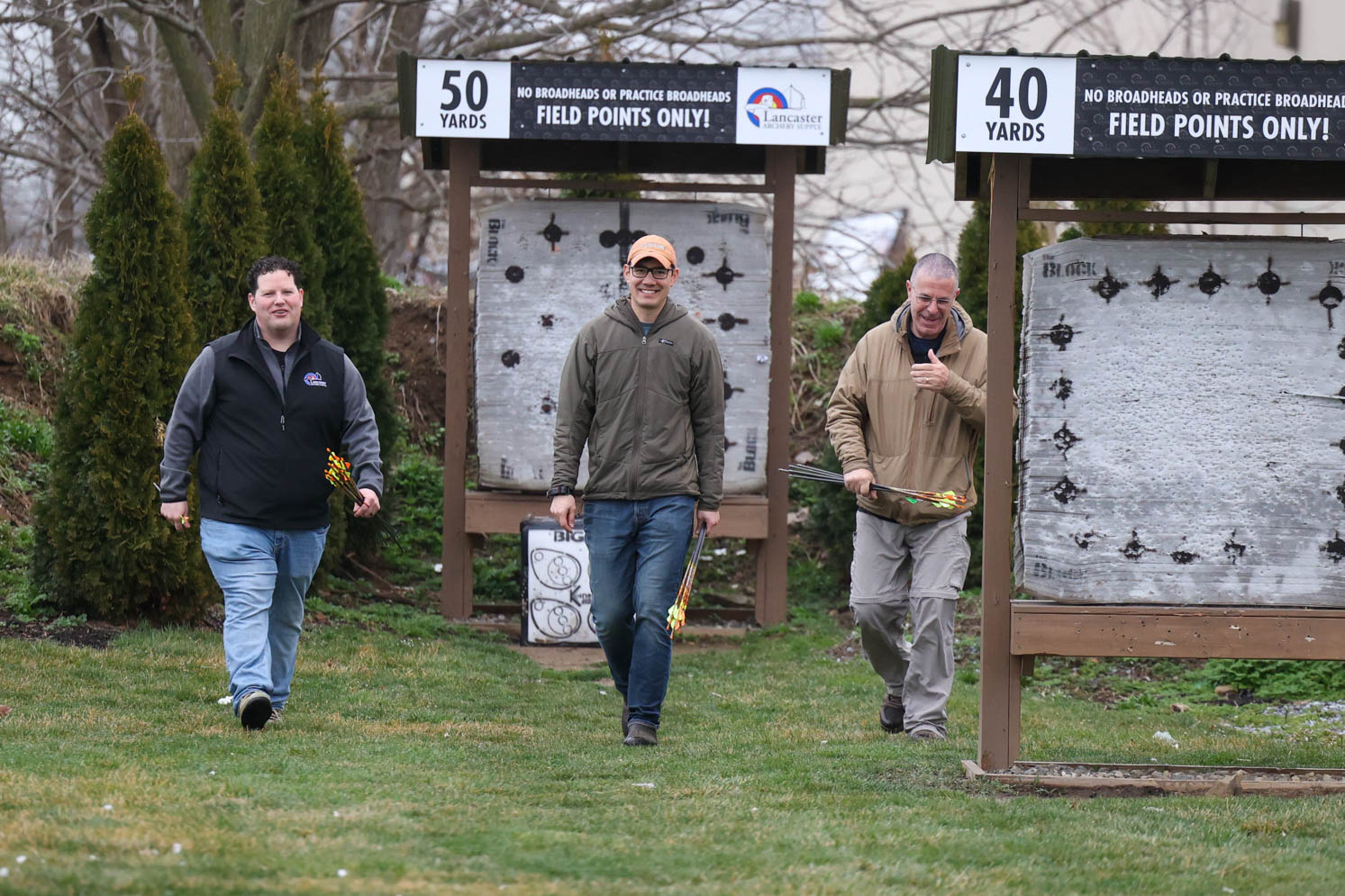
Natalie Krebs
P.J. Reilly: longtime bow reviewer and video host for Lancaster Archery Supply. Reilly also reviews bows for LAS and has bowhunted everything from whitetails to musk ox.
Alex Robinson: Outdoor Life‘s Editor-in-Chief, bow test veteran, and workaday bowhunter.
Dustin Cimato: An archery coach, bowhunter, former bow technician, and a Lancaster Archery Supply employee who lives and breathes shooting arrows.
Scott Einsmann: Outdoor Life Executive Gear Editor, former archery coach, and lifelong archery nerd.
Best Compound Bows: Reviews & Recommendations
Editor’s Choice: PSE Mach 30 DS
Specs
- Axle-to-Axle: 30 inches
- Weight: 3.6 pounds
- Brace Height: 6 inches
- Draw Length: 24.5 to 30 inches
- Let-Off: 80 to 90 percent
- Draw Weight: 50, 60, 70, and 80 pounds
- Price: $1,799
Test Results
- Speed: 281 fps (406 grain arrow, 29 inch draw, 59.6 pounds draw weight)
- 50-yard Group Average: 2.04 inches
- Build Quality: 5
- Features: 4
- Back Wall: 4
- Draw Cycle: 4.3
- Grip: 4
- Post Shot: 4

When I started sorting through accuracy data on the second day of testing, I was shocked that none of the three archers shot a single group larger than 2 inches with the Mach 30 DS fully rigged up. The day-two average was an incredible 1.5 inches.
I’d be surprised at that accuracy even if we were testing target bows at 50 yards. But a 30-inch hunting bow that weighs 5.5 pounds fully rigged shouldn’t be able to shoot that well for three different archers.
I needed to rule out the chance that, somehow, lightning struck the Mach 30 DS three times. So we brought in Derek Horner, OL’s social media guy. He’s a bowhunter who, like many of us, shoots infrequently during the offseason. As I was adjusting the Mach 30 DS to his draw length he said the last time he shot a bow was about three weeks ago. He was the ideal person to sort out if the Mach 30 DS is something special or if the testers had a fluke hot streak.
He got roughly sighted in at 50 yards and sent a three-shot group down range. I walked down with calipers and measured it myself. It was a 1.87-inch group. Unbelievable. What’s even crazier is that he shot another sub-2-inch group immediately after.
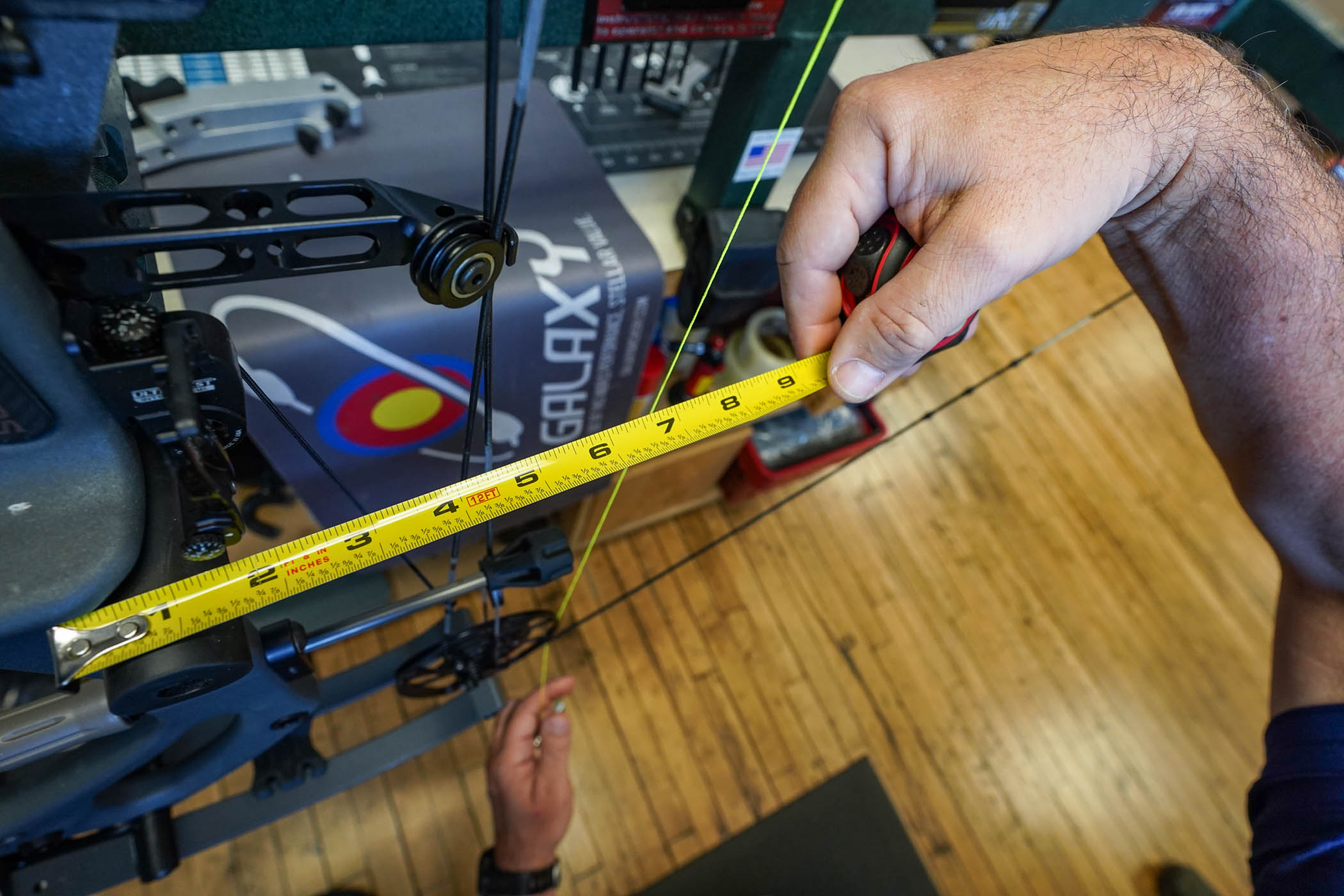
Scott Einsmann
How can a short and light bow be so accurate for a wide range of archers? Part of the answer is PSE’s Full Draw Stability. The Mach 30 DS’ brace height is 6 inches, but at full draw the brace height increases. Don’t worry, I didn’t get it at first either. To illustrate that phenomena we drew the bow back on a draw board and measured from the deepest part of the grip to where the bowstring would be at rest. It was about 7 inches when the bow was at full draw. We tried the same thing with other flagships and they either decreased slightly or had no change. A longer brace height usually makes a bow more forgiving by reducing torque and the amount of time the arrow is attached to the string. The increased dynamic brace height gives the same torque-reducing effect as a bow with a high brace height.
But there’s more to it than just Full Draw Stability, because the Evolve 33 DS also has that same feature and it didn’t have the shockingly good accuracy of the carbon bow. There’s something going on with the Mach 30’s riser-to-limb length ratio, pivot point location, and other design factors to produce a bow that holds incredibly steady at full draw — especially when paired with a front stabilizer.
Everyone who shot the Mach 30 DS commented on how easily the pin stayed on target. “The pin just stuck to the bullseye and the arrows always hit behind the pin,” says Robinson. “I shoot the 33-inch PSE Nock On Carbon Levitate and I think this bow might actually hold on target better, which shouldn’t be possible.”
Even Reilly, who has reviewed just about every flagship hunting bow, couldn’t believe how well the Mach 30 DS shoots. “The pin just sits there,” he says. “It theoretically shouldn’t because of how short it is, but it does.”
Probably the biggest testament is that Reilly, who has shot Mathews for as long as I’ve known him, will be hunting with the Mach 30 DS this year, including taking it on a caribou hunt.
The PSE Mach 30 DS is a compromise-free bow. It draws smooth, aims steady, has minimal thump, an easy tuning system, is fast, is forgiving, and weighs less than 6 pounds set up. It’s an expensive bow at $1,800, but keep in mind that the risers are hand-laid in the USA. Most carbon risers from other manufacturers are made overseas. The fact that these risers are individually made by hand is impressive, but it also means that PSE can’t crank out hundreds per day and it’s currently difficult to find the Mach 30 DS in stock.
Hoyt RX-8 HBX Xact
Specs
- Axle-to-Axle: 30.56 inches
- Weight: 4 pounds
- Brace Height: 6.13 inches
- Draw Length: 25 to 30 inches
- Let-off: 75, 80, and 85 percent
- Draw Weight: 50, 60, 65, 70, and 80 pounds
- Price: $1,950
Test Results
- Speed: 274 fps (406 grain arrow, 29 inch draw, 59.9 pounds draw weight)
- 50-yard Group Average: 3.23 inches
- Build Quality: 5
- Features: 4.3
- Back Wall: 4
- Draw Cycle: 4
- Grip: 3.6
- Post Shot: 5
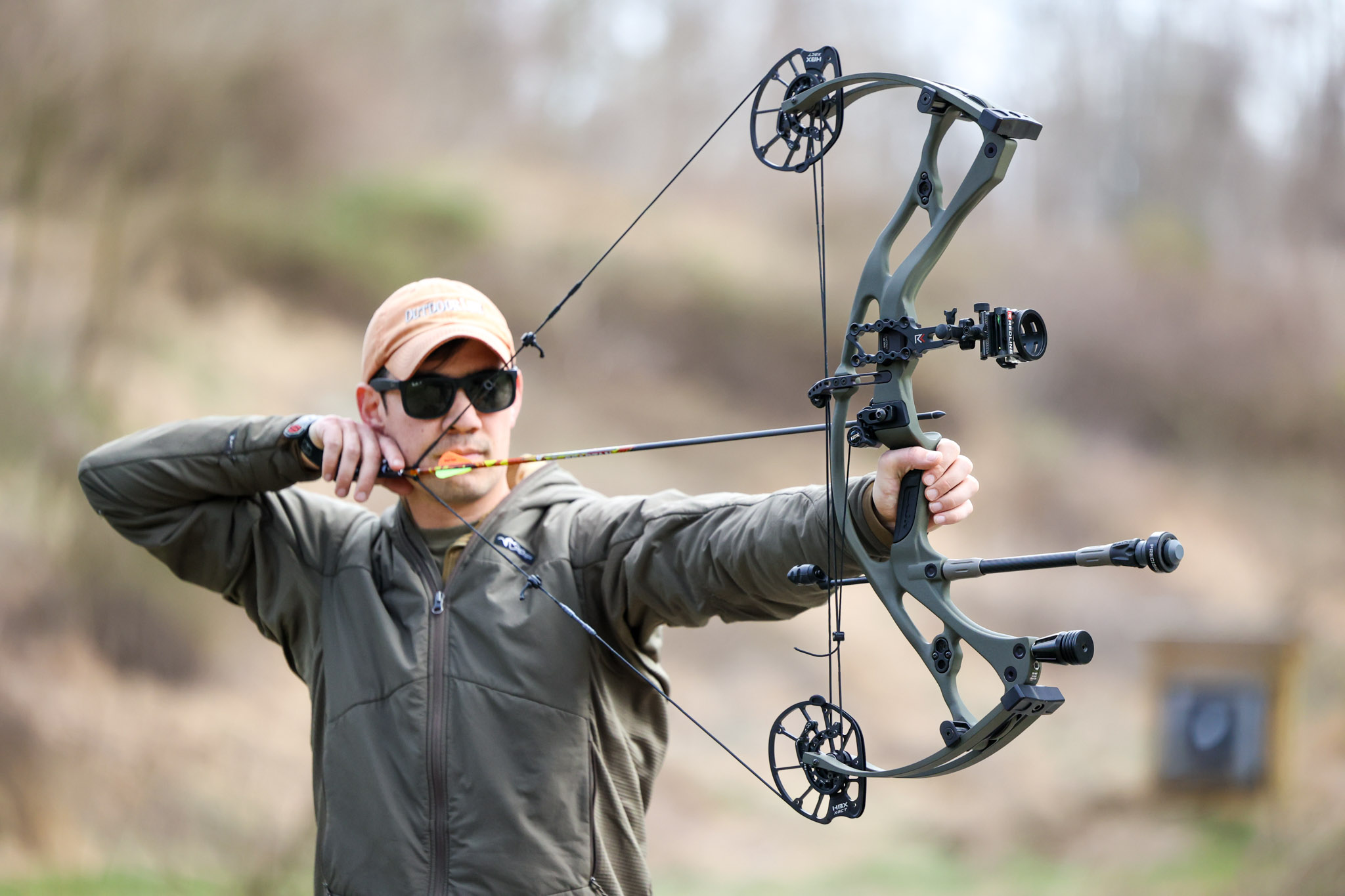
Natalie Krebs
If a smooth draw and zero hand shock are important to you, then this is your bow. The Hoyt RX-8 had one of the best draw cycles and the best post shot experience. Testers repeatedly said it’s a “fun bow to shoot.” I don’t disagree in the slightest. This year’s theme is brands redefining themselves, and I think it’s safe to say the “Hoyt thump” is history.
Think of a draw cycle like a rocking chair. The rocker can be shaped in a way so that the rock starts easy, has its peak in the middle, and then finishes easy. Or it can be shaped so that the beginning requires a little more force and then the end of the rock is much easier. The location of the peak and the shape of the curve changes the experience.
Most people want a bow that has a flatter curve, so that it has an easy build into the peak and then a smooth transition to let off. That’s what the RX-8 offers, and when you get it back, it feels like the draw stops get stuck at full draw (in a good way). That easy holding experience will come in handy when you’re holding at full draw waiting for a bull to turn broadside.
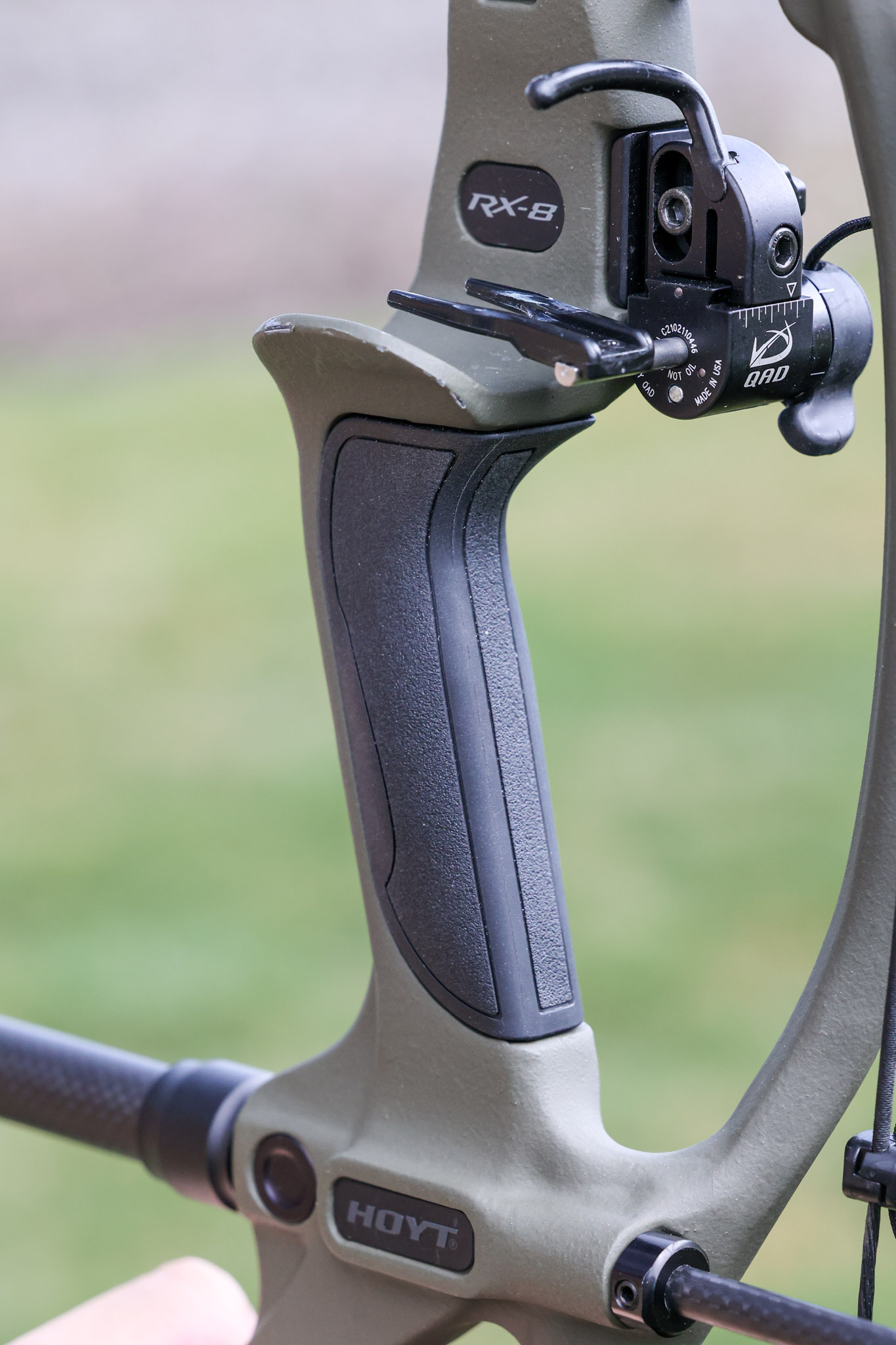
Natalie Krebs
We loved the smooth draw, solid back wall, and zero hand shock. However, the grip is the bow’s weak point. The area your palm touches is wide, about .72 inch, and its rounded shape is built more for comfort than precision. Compare it to target-style grips, which are usually .5-inch wide, flat, and have defined edges for consistent hand placement. If you try the RX-8 and find the grip it isn’t for you, Ultraview makes an aftermarket option that’s worth checking out.
We got good accuracy from the RX-8 with its 3.23-inch average, especially compared to historic results. Consider that last year the most accurate bow had a 3.18-inch group average at 50 yards. Reilly shot the best group of the whole test from the RX-8 at .56 inches. So the bow can shoot. The issue was getting consistently good accuracy. Testers routinely shot a tight group and a wide group that then averaged around 3.5 inches. I think this inconsistently is partly due to the grip, which, as I said, is a solvable issue.
Mathews Lift
Specs
- Axle-to-Axle: 29.5 inches
- Weight: 3.99 pounds
- Brace Height: 6 inches
- Draw Length: 24.5 to 30 inches
- Let-off: 80 or 85 percent
- Draw Weight: 50, 55, 60, 65, 70, 75, and 80
- Price: $1,329
Test Results
- Speed: 283 fps (406 grain arrow, 29 inch draw, 59.2 pounds draw weight)
- 50-yard Group Average: 2.55 inches
- Build Quality: 5
- Features: 4.3
- Back Wall: 3.3
- Draw Cycle: 3.6
- Grip: 2.3
- Post Shot: 3.3
When I think of Mathews, I think of a smooth, even draw cycle and comfortable hold. But the Lift is different. It doesn’t have that signature draw that put Mathews bows at the top of our past 5-foot tests. In fact, it was one of the worst in this year’s evaluation. The draw starts with the typical initial effort to get the cams rolling, but it lasts longer than other bows. There’s a short area toward the end of the draw where it gets easier before one more hump to pull past into the valley. A 3.6 isn’t a terrible score (a 3 is considered good). But the draw just isn’t Mathews-smooth. In Reilly’s Mathews Lift review he says that the 33-inch Lift is easier to draw than the 29.5-inch version we tested.
In the post-shot category, there’s some felt vibration that dissipates quickly. In the competitive arena of flagship bows that little bit of vibe is enough to bring the Lift’s score down. It’s worth noting that the Lift is very quiet despite the vibration.
The Lift was one the most accurate bows we shot, and the second lightest at 3.9 pounds, which is impressive for an aluminum riser. And it was the fastest of the test at 283 fps with a 406-grain arrow, 60-pound draw weight, and 29-inch draw length.
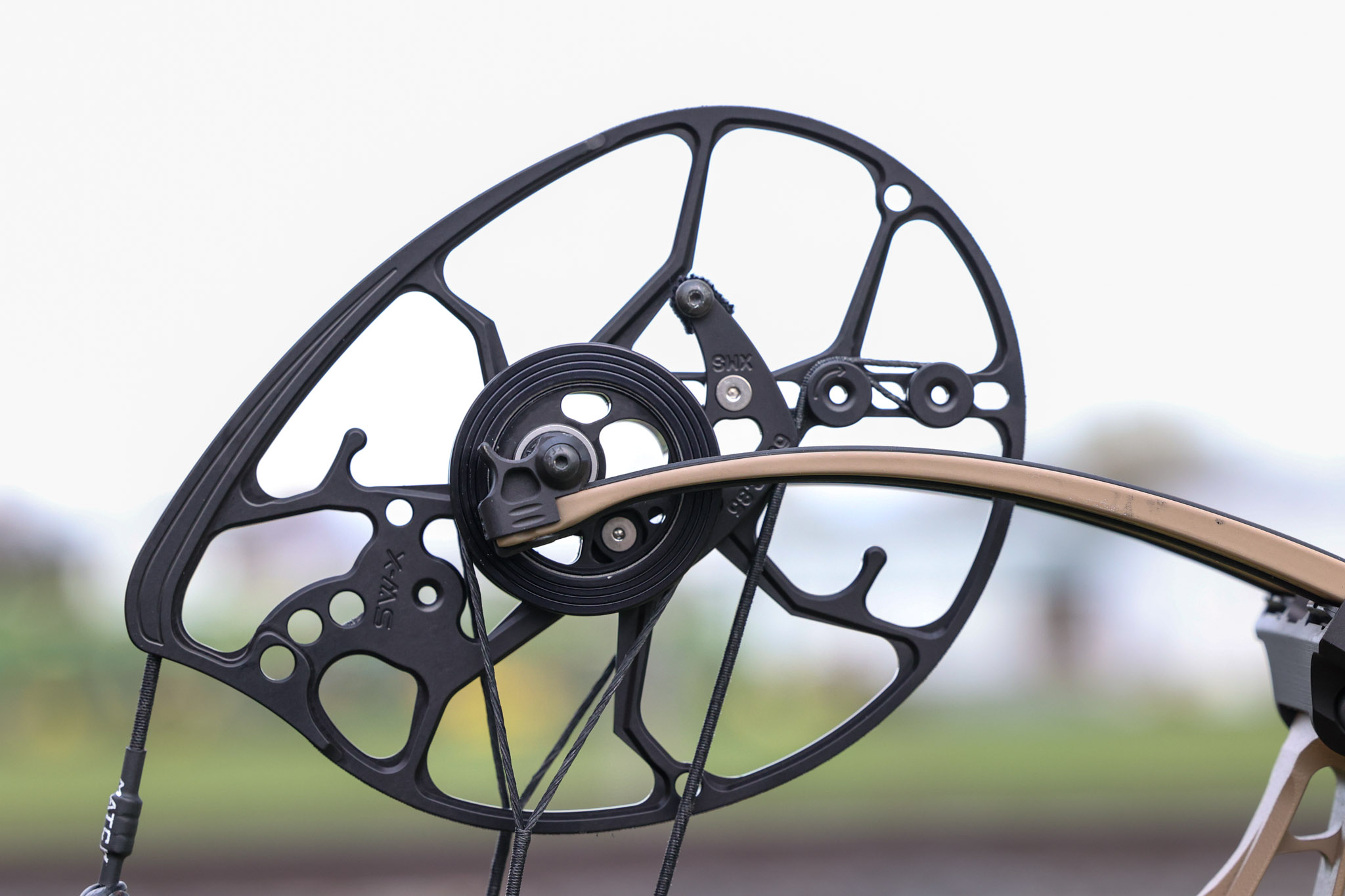
Natalie Krebs
It’s also a truly innovative bow design. Mathews moved the axles from going through the limb to fixed on top. The new axle position allowed them to shorten the limbs, which resulted in a faster, lighter bow. This is a rare first in the 58-year history of compound design.
It’s also compatible with Shot Sense, which is a sensor that inserts into the grip. The device will show how steady you hold and your post-release movement, which can help you diagnose form issues.
PSE Evolve 33 DS
Specs
- Axle-to-Axle: 33 inches
- Weight: 4.6 pounds
- Brace Height: 7 inches
- Draw Length: 26 to 31.5 inches
- Let-off: 80 to 90 percent
- Draw Weight: 60, 70, and 80 pounds
- Price: $1,199
Test Results
- Speed: 274 fps (406 grain arrow, 29 inch draw, 59.6 pounds draw weight)
- 50-yard Group Average: 2.59 inches
- Build Quality: 4
- Features: 3.3
- Back Wall: 4
- Draw Cycle: 5
- Grip: 3.6
- Post Shot: 4
This year was one of the most competitive years for accuracy we’ve ever had. There were three bows that had sub-3-inch group averages, including the Evolve 33 DS. It was the most accurate bow on day one when we shot without stabilizers, and narrowly finished third on day two with stabilizers. It was also one of two bows that received a perfect draw cycle score. And as far as 2024 flagship prices go, it’s an affordable option coming in $100 to $200 less than other aluminum bows. If I had to pick the best aluminum bow, this is it.
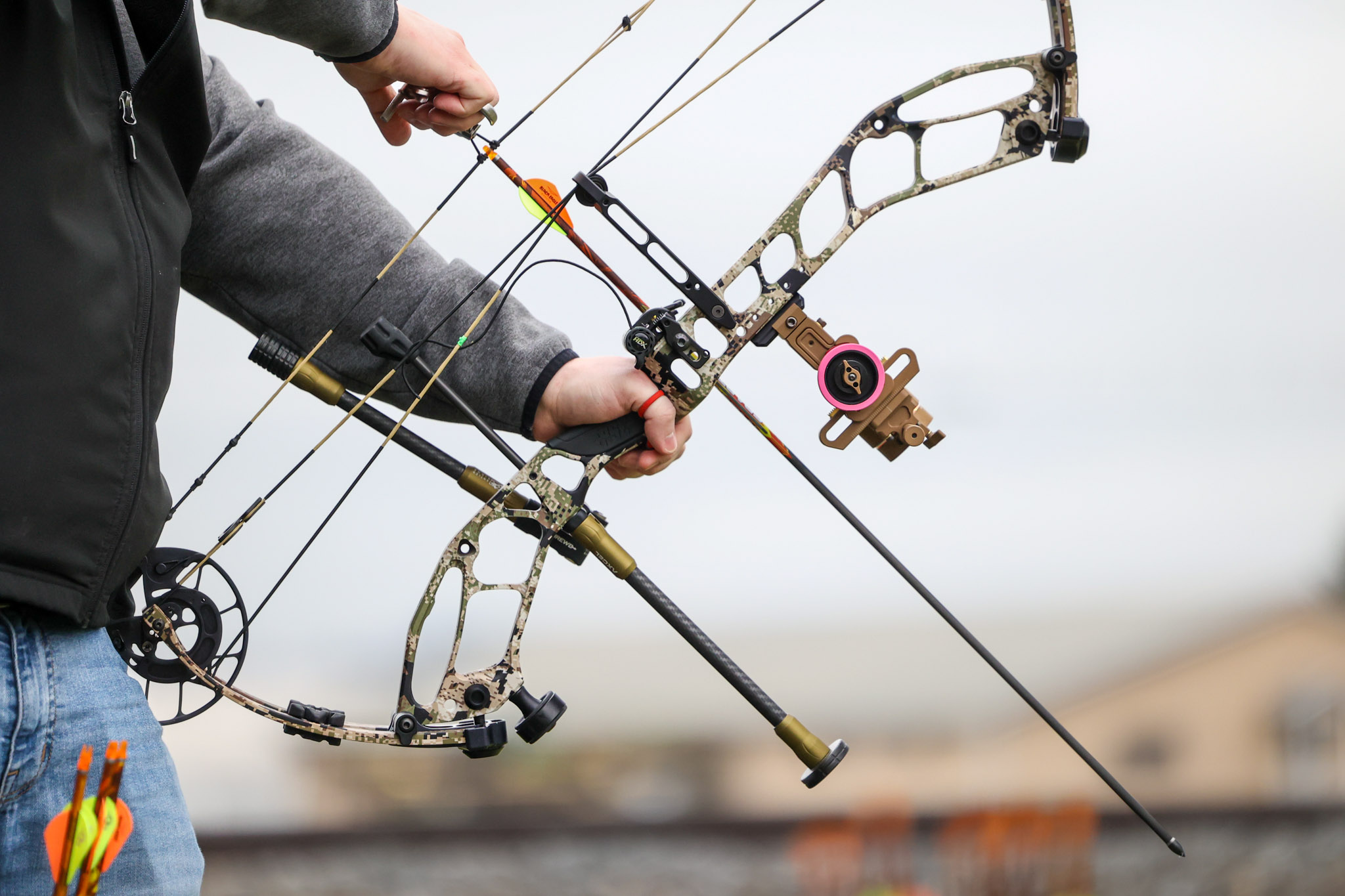
Natalie Krebs
The main con of this bow is the fat, rubber grip. Like many similar grips, the testers found it comfortable, but lacking in consistency. And like other grips we don’t like — cough, Mathews — you can remove it and shoot off the bare riser.
Hoyt Alpha X 33
Specs
- Axle-to-Axle: 33.31 inches
- Weight: 4.75 pounds
- Brace Height: 6.37 inches
- Draw Length: 26 to 31 inches
- Let-off: 75, 80, and 85 percent
- Draw Weight: 50, 60, 65, 70, and 80 pounds
- Price: $1,449
Test Results
- Speed: 276 (406 grain arrow, 29 inch draw, 59.6 pounds draw weight)
- 50-yard Group Average: 3.23 inches
- Build Quality: 4.3
- Features: 4.3
- Back Wall: 4
- Draw Cycle: 4
- Grip: 4
- Post Shot: 3.6
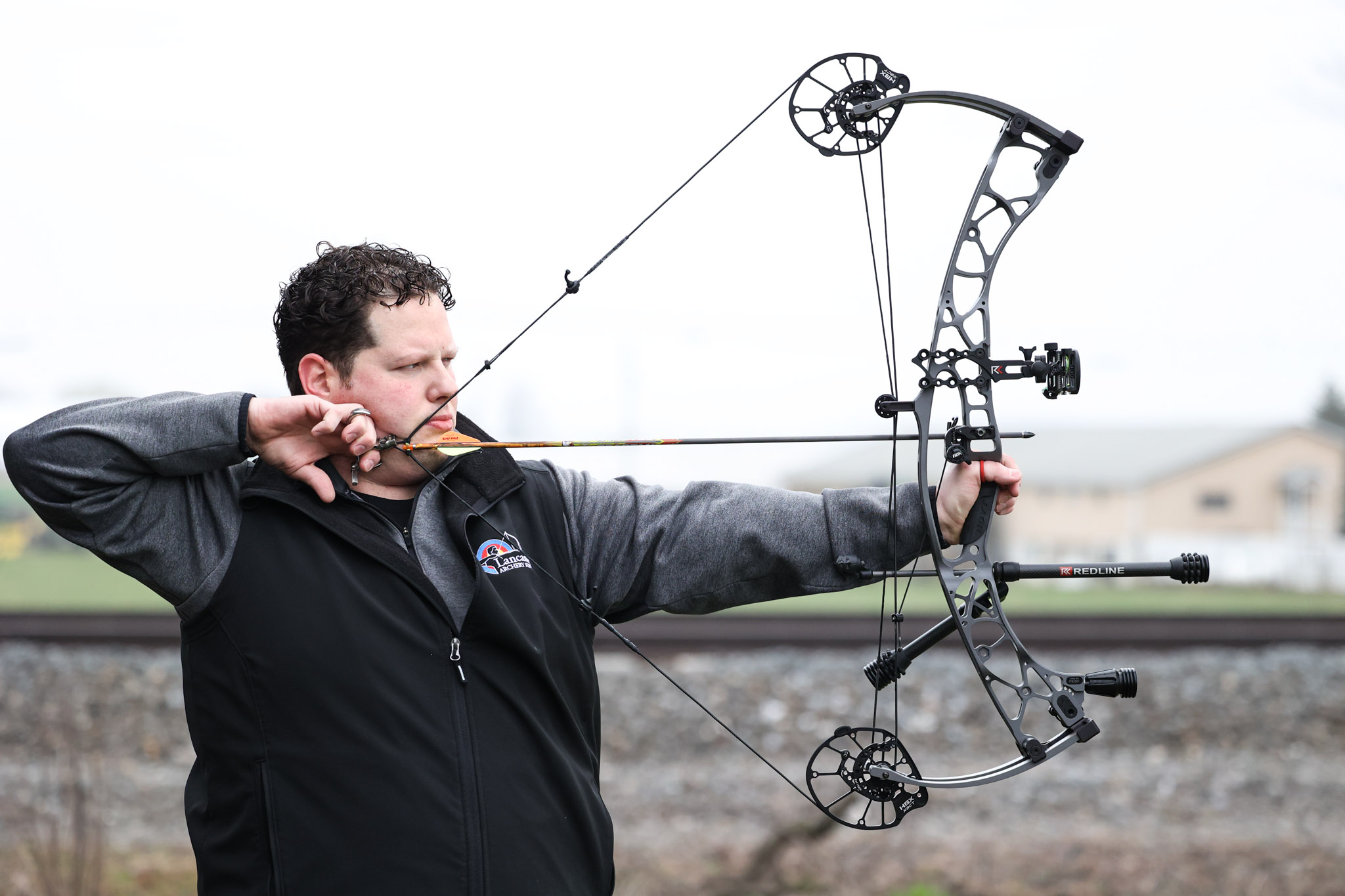
Natalie Krebs
The Hoyt Alpha X 33 finished third in our 5-foot test because it shares many qualities with the top finisher, the Hoyt RX-8. It uses the same cam and has a very similar draw, although the RX-8 feels a touch smoother. It’s feature rich with adjustable let-off, Picatinny sight mounting, and a dovetail arrow rest mount. It was also very close in accuracy to the RX-8.
The two bows diverge when it comes to price, weight, and post shot feel. The Alpha X 33 is a longer, aluminum bow and it weighs about ½ pound more. It also has more vibration than the RX-8 and costs about $500 less.
One of the cool things about testing bows every year is that I get to see bow designs evolve. It was shocking in 2021 when Hoyt went away from their Cam ½ design to a binary cam. Their freshman effort was pretty good, but the HBX Xact cam used in the RX-8 and Alpha X is near perfection.
Elite Kairos
Specs
- Axle-to-Axle: 33 inches
- Weight: 4.5 pounds
- Brace Height: 6.5 inches
- Draw Length: 24 to 29 inches
- Let-off: Up to 90 percent
- Draw Weight: 40, 50, 60, 65, and 70 pounds
- Price: $1,300
Test Results
- Speed: 277 fps (406 grain arrow, 29 inch draw, 59.6 pounds draw weight)
- 50-yard Group Average: 3.33 inches
- Build Quality: 4.3
- Features: 3.6
- Back Wall: 2.6
- Draw Cycle: 2.6
- Grip: 3.3
- Post Shot: 3
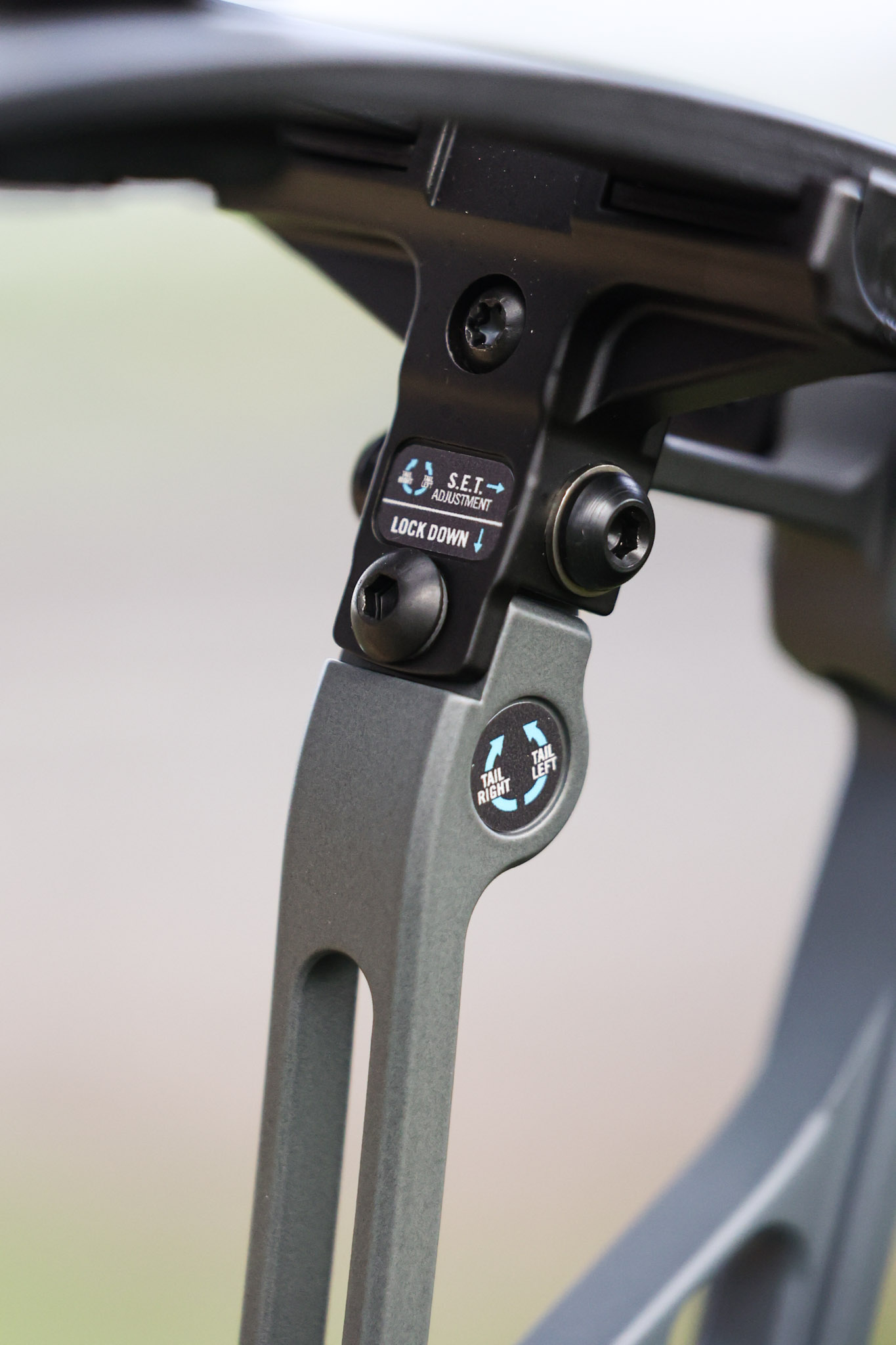
Natalie Krebs
Last year Elite’s first carbon bow, the Era, won editor’s choice because of its awesome shooting experience and innovative, bridged carbon riser design. But, the Kairos isn’t like the Era or other Elite’s we’ve shot. If you’ve shot many Elite bows, you’re expecting a silky draw and a nearly impossible to let down bow. With the Kairos you’re getting a bow that’s tough to get moving and stays tough all the way into a short valley. It received the lowest draw and back wall scores as a result. But the build quality, features, and grip are exactly what you’d expect from Elite, which is to say, very good. You get their excellent build quality, one of the best tuning systems available, ¼-inch draw length adjustment, and a nicely shaped grip.
Elite Ethos
Specs
- Axle-to-Axle: 33 inches
- Weight: 4.5 pounds
- Brace Height: 6.75 inches
- Let-off: Up to 90 percent
- Draw Length: 25.5 to 31 inches
- Draw Weight: 40, 50, 60, 65, 70, and 75 pounds
- Price: $1,300
Test Results
- Speed: 278 fps (406 grain arrow, 29 inch draw, 59.9 pounds draw weight)
- 50-yard Group Average: 3.41 inches
- Build Quality: 4.3
- Features: 3.6
- Back Wall: 3
- Draw Cycle: 3.6
- Grip: 3.3
- Post Shot: 3.3
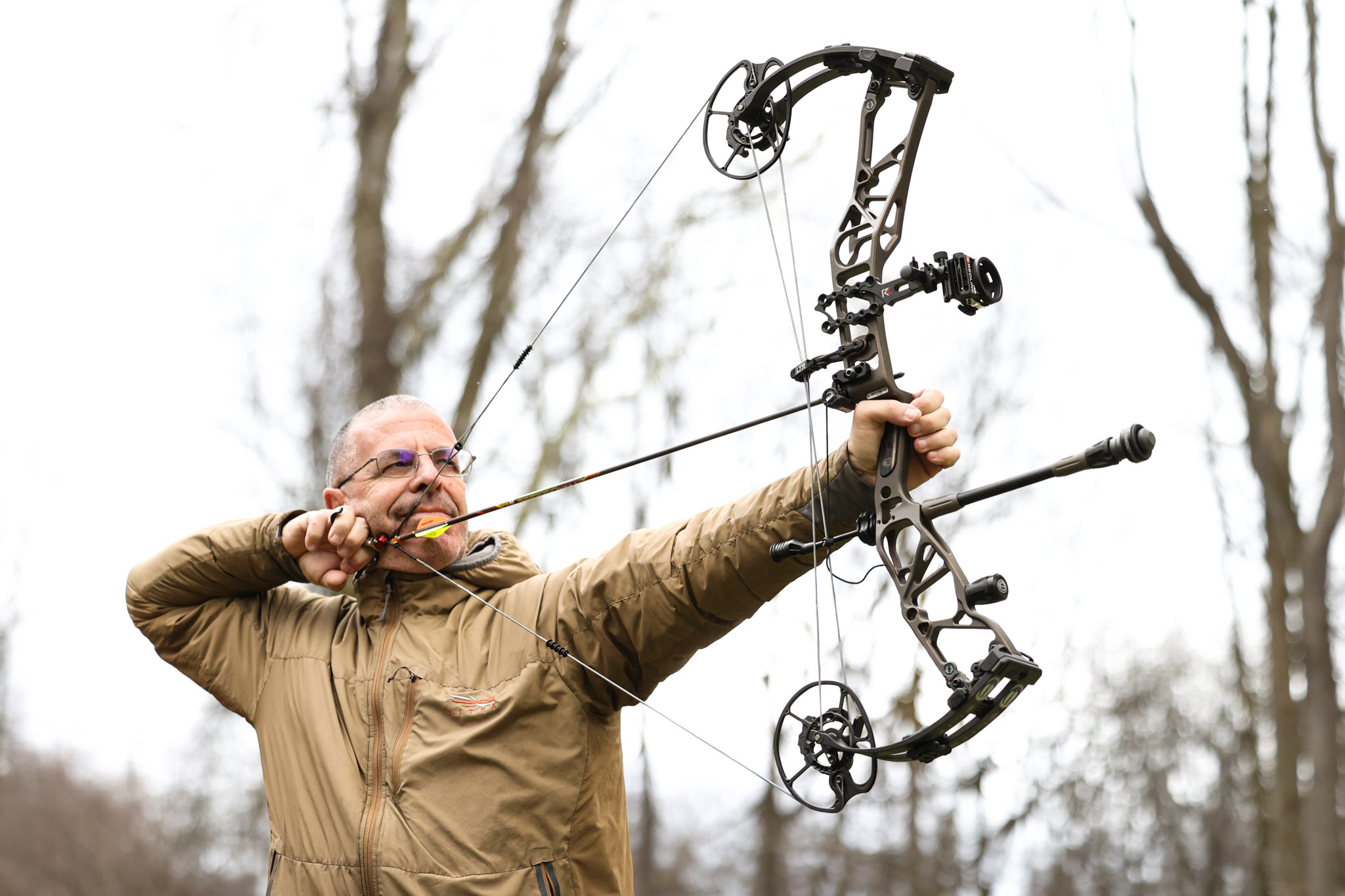
Natalie Krebs
I think everyone on the test team would agree we’d buy the Ethos over the Kairos. It has a much better draw cycle and is easier to hold at full draw thanks to the SP cams it utilizes (the Kairos has SPX cams). Like the Kairos it has all the great features of past Elites like S.E.T. tuning, ¼-inch draw length adjustment, a firm back wall, and plenty of stabilizer mounting options. It also has one of the best finishes you can get on a compound bow.
Darton Sequel 31
Specs
- Axle-to-Axle: 31.06 inches
- Weight: 4.45 pounds
- Brace Height: 6.3 inches
- Draw Length: 25 to 30.5 inches
- Let-off: 80 to 85 percent
- Draw Weight: 50, 60, and 70 pounds
- Price: $1,200
Test Results
- Speed: 276 fps (406 grain arrow, 29 inch draw, 59.6 pounds draw weight)
- 50-yard Group Average: 3.58 inches
- Build Quality: 4
- Features: 3
- Back Wall: 4
- Draw Cycle: 5
- Grip: 3.3
- Post Shot: 3.6
As we were doing the 5-foot test, Riley drew back the Darton and said, “Darton figured it out this year.” He was referring to the effortless draw, which ended up tying the PSE Evolve 33 DS for the best draw cycle. The draw requires a consistent amount of force the whole way back and has a very easy transition into the valley. This is the bow you want when it’s 10 degrees, you’ve been sitting still for six hours, and you need to get to full draw with minimal movement. The dual cable stops make for a solid back wall. Once you’re at full draw, it’s easy to stay there and you have to almost push forward to let down.
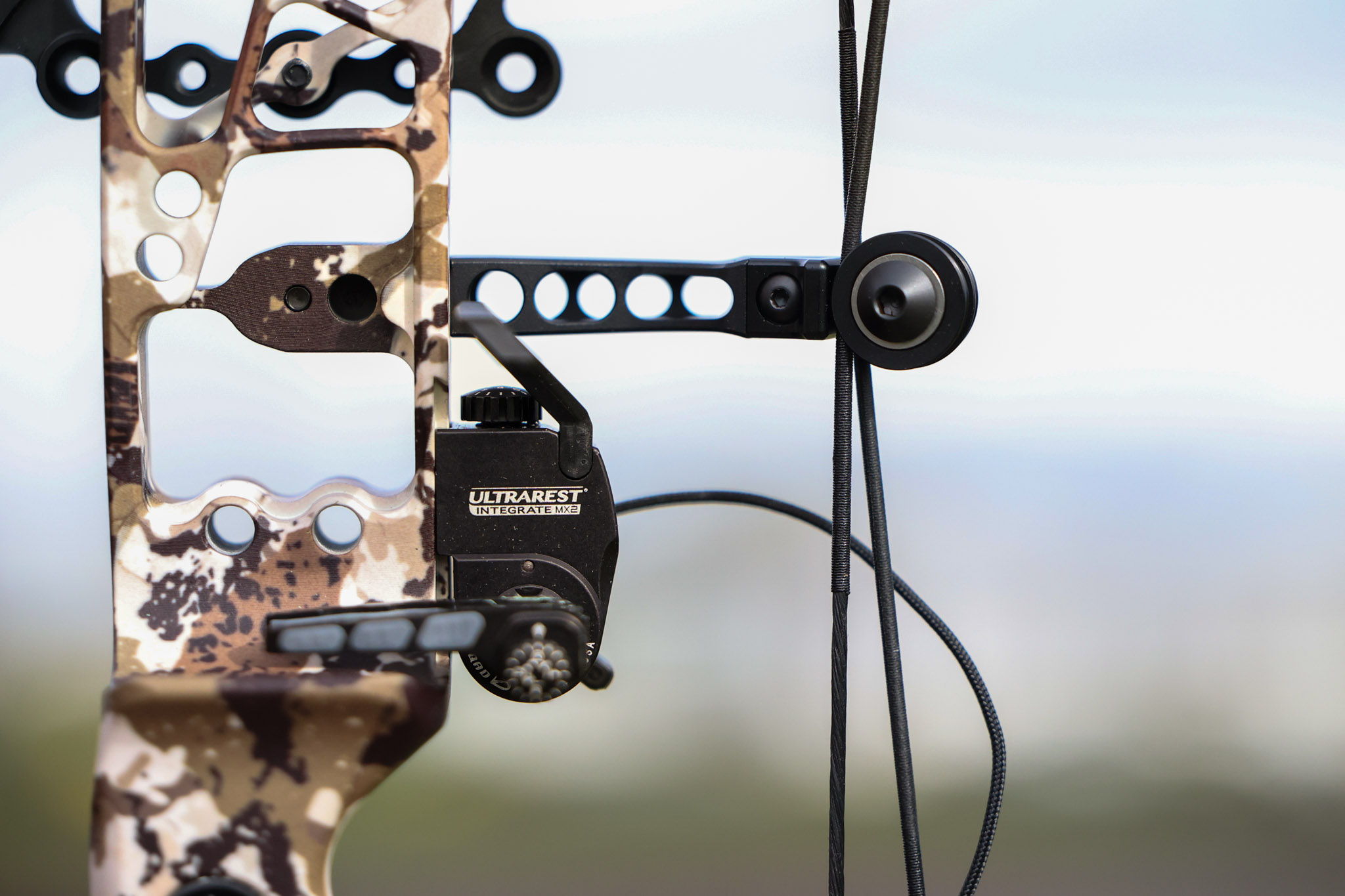
Natalie Krebs
After the arrow is gone you’ll feel some vibration. It’s not going to rattle your fillings loose, but it’s not a completely dead-in-the-hand experience either. Another area where it struggled was accuracy. “This bow was a champ in the 5-foot test and I hoped it would be one of the finalists,” says Robinson. “However, I had a harder time holding it on target compared to other top bows.”
Bowtech Core SR
Specs
- Axle-to-Axle: 33 inches
- Weight: 4.5 pounds
- Brace Height: 6 inches
- Draw Length: 25 to 30 inches
- Let-off: 80 or 85 percent
- Draw Weight: 50, 60, and 70 pounds
- Price: $1,399
Test Results
- Speed: 277 (406 grain arrow, 29 inch draw, 59.6 pounds draw weight)
- 50-yard Group Average: 4.7 inches
- Build Quality: 4
- Features: 4
- Back Wall: 3.6
- Draw Cycle: 3.3
- Grip: 4.6
- Post Shot: 1.6
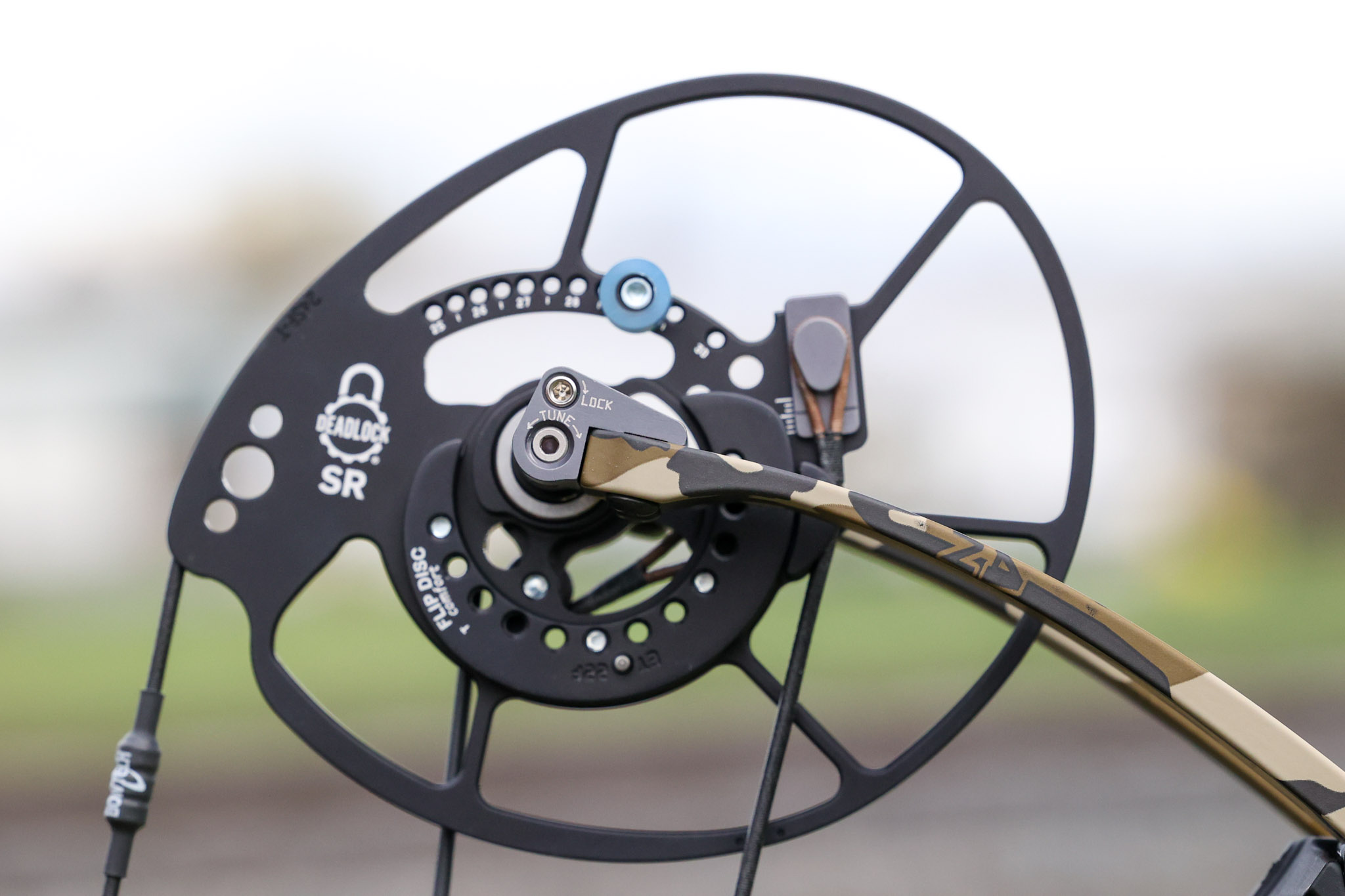
Natalie Krebs
Bow presses are about as commonly owned as hinge releases these days. But putting your bow in a press to shim cams or twist cables is still a chore. Turning a screw though? Piece of cake. That’s why Bowtech makes the best bows for home bow mechanics. You just need Allen wrenches to adjust cam lean and timing. The hardened, stainless screws used for the draw length mod, DeadLock, and TimeLock get a chef’s kiss from anyone who has stripped the soft screws used for most bows.
Tuning is easy and so is customization. We tested the bow in the comfort setting, but if you want more speed, just flip the FlipDisc to the performance setting. Let’s say you want to try a higher-wrist grip. Bowtech makes this easy with GripLock, a simple adjustment screw that allows you to change your grip angle. With other bows you would have to buy an aftermarket grip or build up the heel with putty. I’ve done both, and they work, but aren’t ideal if you decide you don’t like the higher angle.
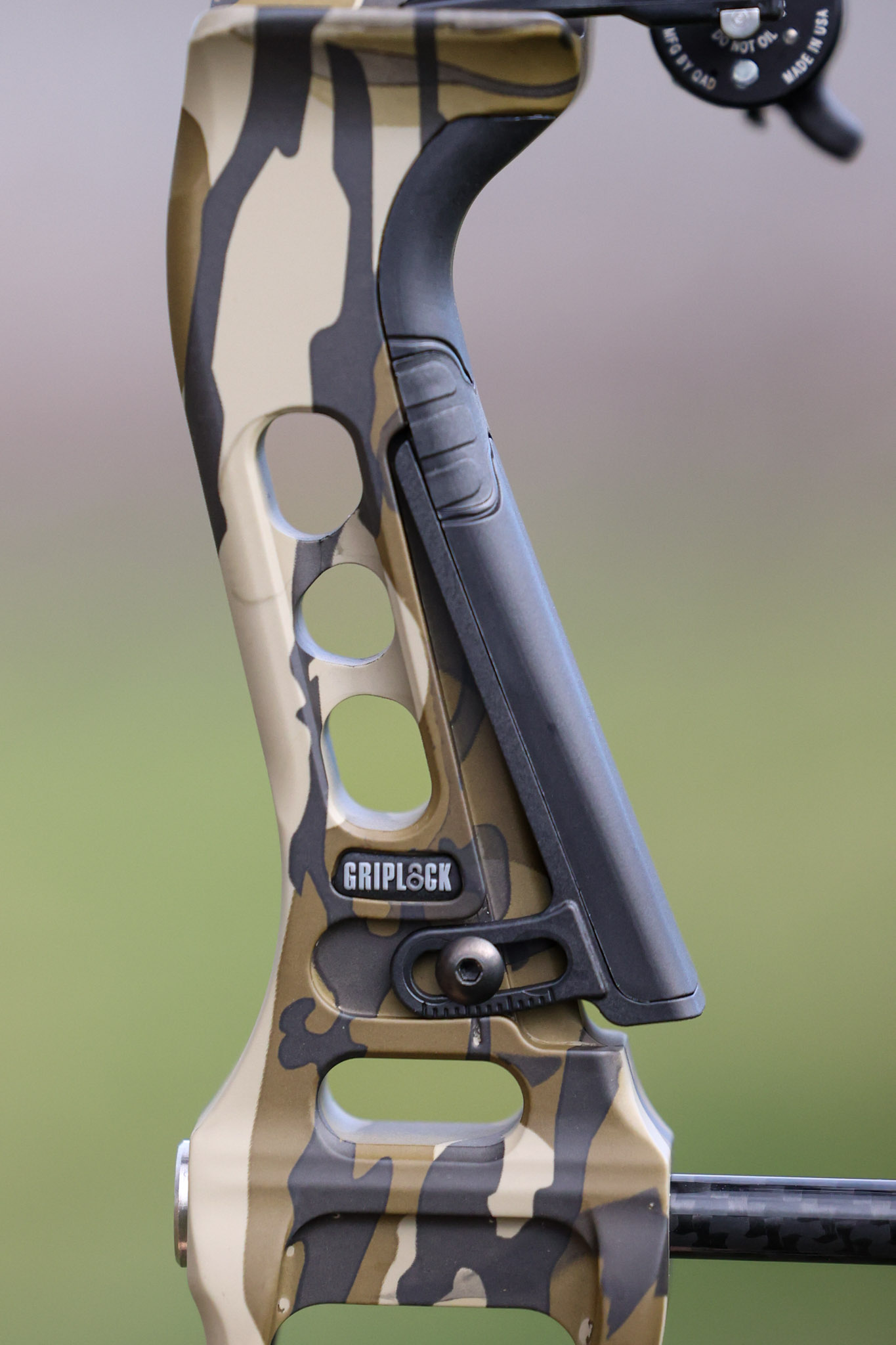
Natalie Krebs
Basically, Bowtech made the ultimate bow for tinkerers. As a tinkerer myself, I appreciate the detail in each of their features. The Core SR looks great, too.
“If looks could kill, then this Bowtech in old-school Mossy Oak Bottomland camo would be the deadliest in the test. I’d happily hunt with it for its good aesthetics and many features,” says Robinson.
Looks and features are great, but the Core SR wasn’t the best performing bow in our test. It shot the largest group average and its rough post-shot experience brought it down into the bottom four in the 5-foot test. Realistically its 4.7-inch group average wasn’t bad though. Consider that group size puts you inside an ASA 10 ring. With advanced tuning, and time to get used to the bow, there’s no doubt our testers would have tightened that average.
The Core has a good draw cycle; it’s not crazy smooth like the Carbon One we tested last year, but it’s far from what I’d call aggressive. It gets to peak draw weight quickly, and then you pull that through the middle of the draw, at around ¾ draw there’s a gradual transition into the valley. It’s an easy bow to keep pinned against the stops.
The grip was a favorite among testers. It’s narrow, flat, and has radiused edges. There’s an inlaid band of rubber near the throat to keep your hand from slipping while still allowing for easy and consistent positioning. Other notable features include dovetail rest mounting and an inline sight mounting.
Final Thoughts
I thought I knew a little about compound bows. But, this year’s crop of new bows has me second-guessing everything. Speed bows aren’t supposed to be easy to shoot, and bows that are light aren’t supposed to be accurate. Yet, the two fastest and lightest bows in this year’s test were the most accurate.
That’s why we don’t just measure specs and regurgitate dated archery dogma. We accuracy test for days to gather data and feedback. Anything else would just be speculation, and we wouldn’t learn anything.
There were two main lessons from this year’s test: This is the year to try a different bow brand or different type of bow, and any of the flagship bows we tested will be deadly in the hands of a well-practiced bowhunter.
